Shows
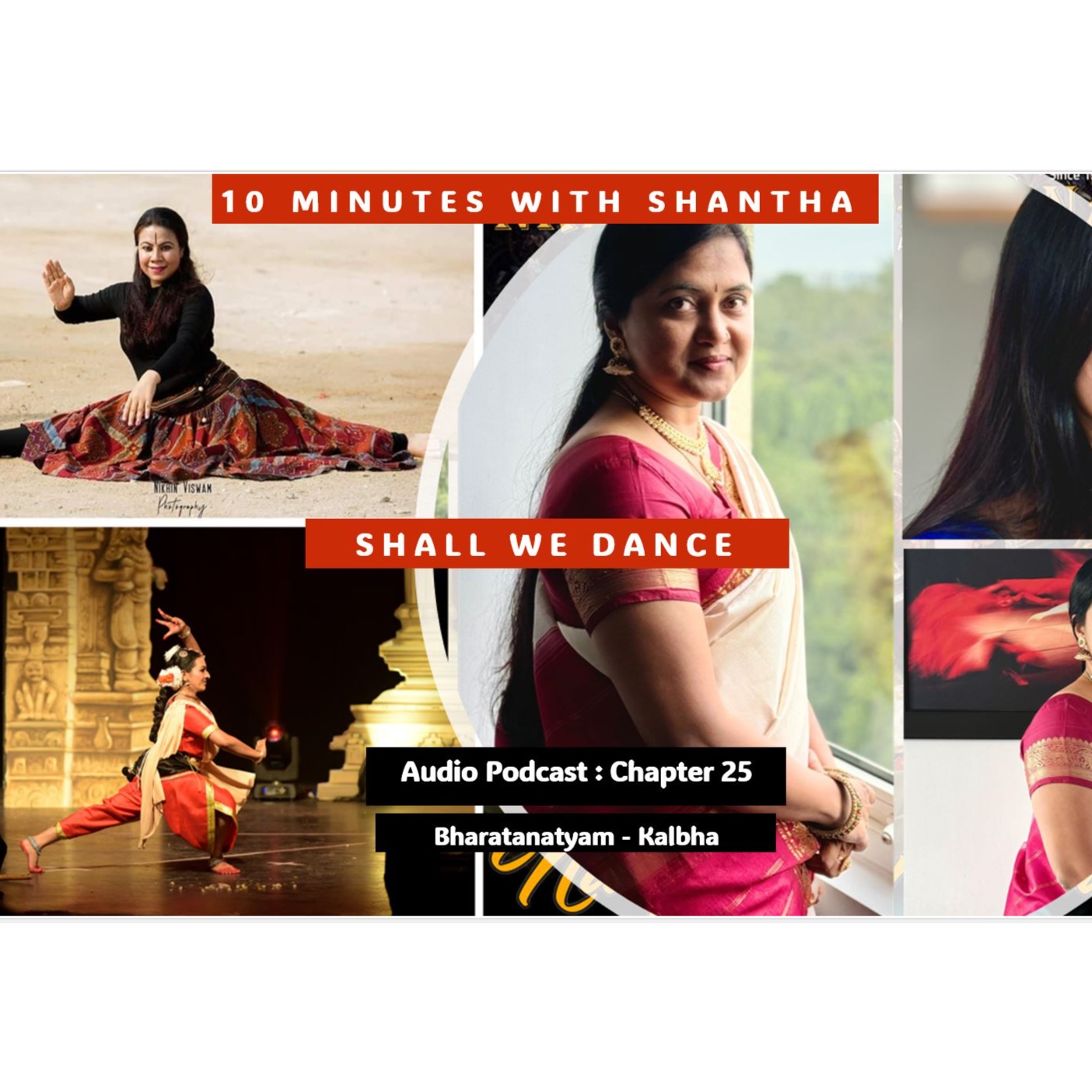 Shall We Dance - Book Teaser10 Minutes With Shantha : Chapter 25 Summary : Bharatanatyam - KalbhaNarrated by Shantha : Shantha describes Kalbha as a groundbreaking fusion of Bharatanatyam and Kalaripayattu, blending the storytelling grace of dance with the raw power of martial arts. Rooted in India's ancient traditions, it transforms movement into both artistic expression and disciplined combat. Kalari’s stealth, agility, and healing techniques merge with Bharatanatyam’s rhythmic precision and emotive storytelling. Created by Guru Arundhati, Kalbha is a structured art form that builds strength, breath control, and deep spiritual connection. The curriculum progresses from foundational postures to advanced choreography, pushing dancers to embody both warrior and perf...2025-03-1104 min
Shall We Dance - Book Teaser10 Minutes With Shantha : Chapter 25 Summary : Bharatanatyam - KalbhaNarrated by Shantha : Shantha describes Kalbha as a groundbreaking fusion of Bharatanatyam and Kalaripayattu, blending the storytelling grace of dance with the raw power of martial arts. Rooted in India's ancient traditions, it transforms movement into both artistic expression and disciplined combat. Kalari’s stealth, agility, and healing techniques merge with Bharatanatyam’s rhythmic precision and emotive storytelling. Created by Guru Arundhati, Kalbha is a structured art form that builds strength, breath control, and deep spiritual connection. The curriculum progresses from foundational postures to advanced choreography, pushing dancers to embody both warrior and perf...2025-03-1104 min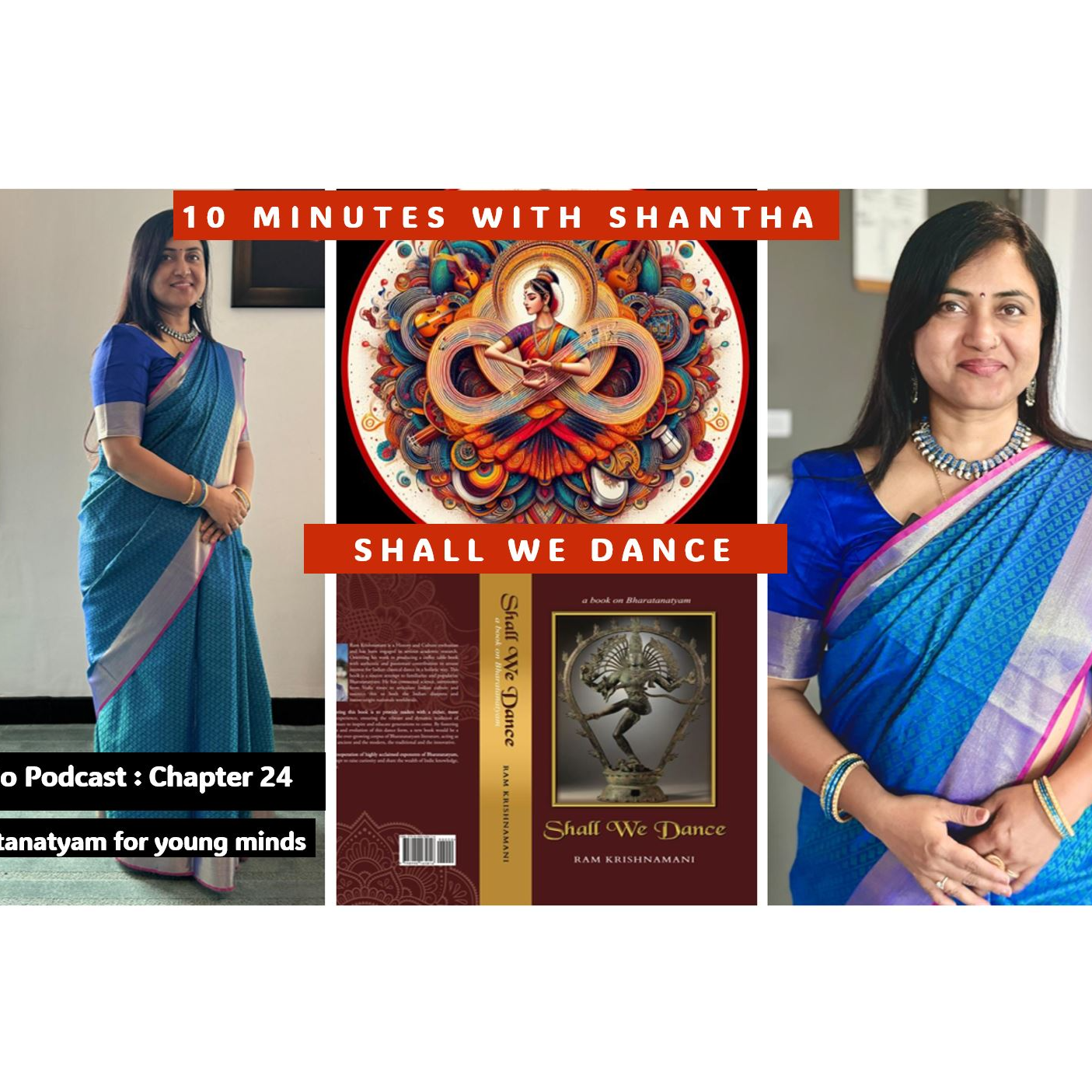 Shall We Dance - Book Teaser10 Minutes With Shantha - Chapter 24 Summary - Bharatanatyam for the Young MindsNarrated by Shantha In today’s episode, the discussion delves into the profound impact of Bharatanatyam on young minds. This ancient Indian classical dance extends beyond mere movement, serving as a transformative tool for cognitive, emotional, and spiritual development. Research highlights how Bharatanatyam enhances brain plasticity, improving memory, discipline, and concentration. Physically, it strengthens the body, promotes flexibility, and refines coordination. Emotionally, it fosters confidence, self-expression, and emotional intelligence, shaping a well-rounded personality. Spiritually, it connects young dancers to their heritage, mythology, and mindfulness practices. The dance form also nurtures teamwork, social skills, an...2025-03-1004 min
Shall We Dance - Book Teaser10 Minutes With Shantha - Chapter 24 Summary - Bharatanatyam for the Young MindsNarrated by Shantha In today’s episode, the discussion delves into the profound impact of Bharatanatyam on young minds. This ancient Indian classical dance extends beyond mere movement, serving as a transformative tool for cognitive, emotional, and spiritual development. Research highlights how Bharatanatyam enhances brain plasticity, improving memory, discipline, and concentration. Physically, it strengthens the body, promotes flexibility, and refines coordination. Emotionally, it fosters confidence, self-expression, and emotional intelligence, shaping a well-rounded personality. Spiritually, it connects young dancers to their heritage, mythology, and mindfulness practices. The dance form also nurtures teamwork, social skills, an...2025-03-1004 min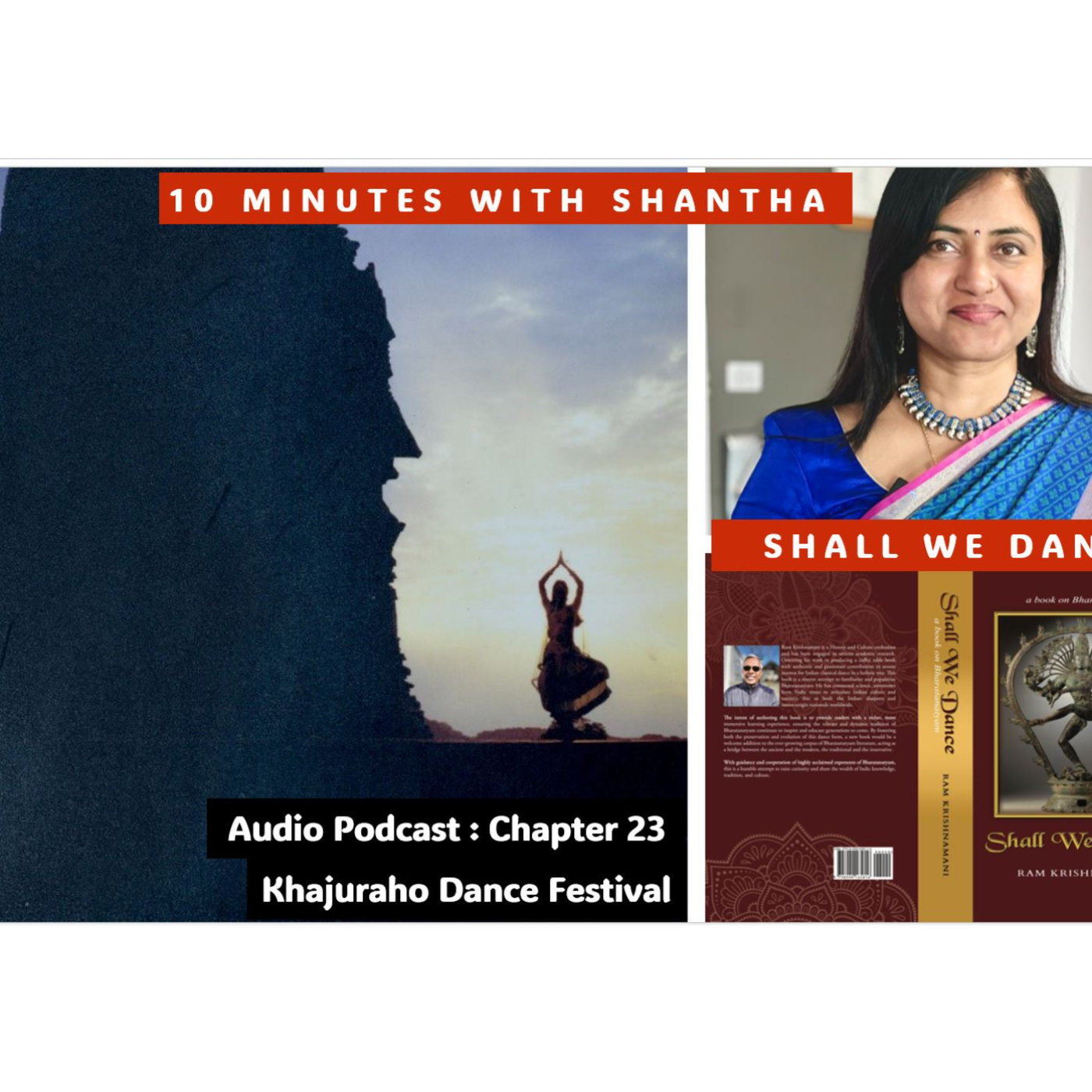 Shall We Dance - Book Teaser10 Minutes With Shantha - Chapter 23 Summary - Khajuraho Dance FestivalNarrated by Shantha : Shantha talks about the Khajuraho Dance Festival as a vibrant annual celebration of India’s classical dance heritage, set against the breathtaking backdrop of the UNESCO-listed Khajuraho temples. She explains that these temples, built by the Chandela dynasty, are adorned with intricate carvings that depict mythology, daily life, and spiritual themes. Since its inception in 1975, the festival has showcased renowned artists performing Bharatanatyam, Kathak, Odissi, Kuchipudi, Manipuri, and Kathakali in an open-air setting before the majestic Vishvanatha and Chitragupta temples. Shantha goes on to explain that beyond dance, it...2025-03-0205 min
Shall We Dance - Book Teaser10 Minutes With Shantha - Chapter 23 Summary - Khajuraho Dance FestivalNarrated by Shantha : Shantha talks about the Khajuraho Dance Festival as a vibrant annual celebration of India’s classical dance heritage, set against the breathtaking backdrop of the UNESCO-listed Khajuraho temples. She explains that these temples, built by the Chandela dynasty, are adorned with intricate carvings that depict mythology, daily life, and spiritual themes. Since its inception in 1975, the festival has showcased renowned artists performing Bharatanatyam, Kathak, Odissi, Kuchipudi, Manipuri, and Kathakali in an open-air setting before the majestic Vishvanatha and Chitragupta temples. Shantha goes on to explain that beyond dance, it...2025-03-0205 min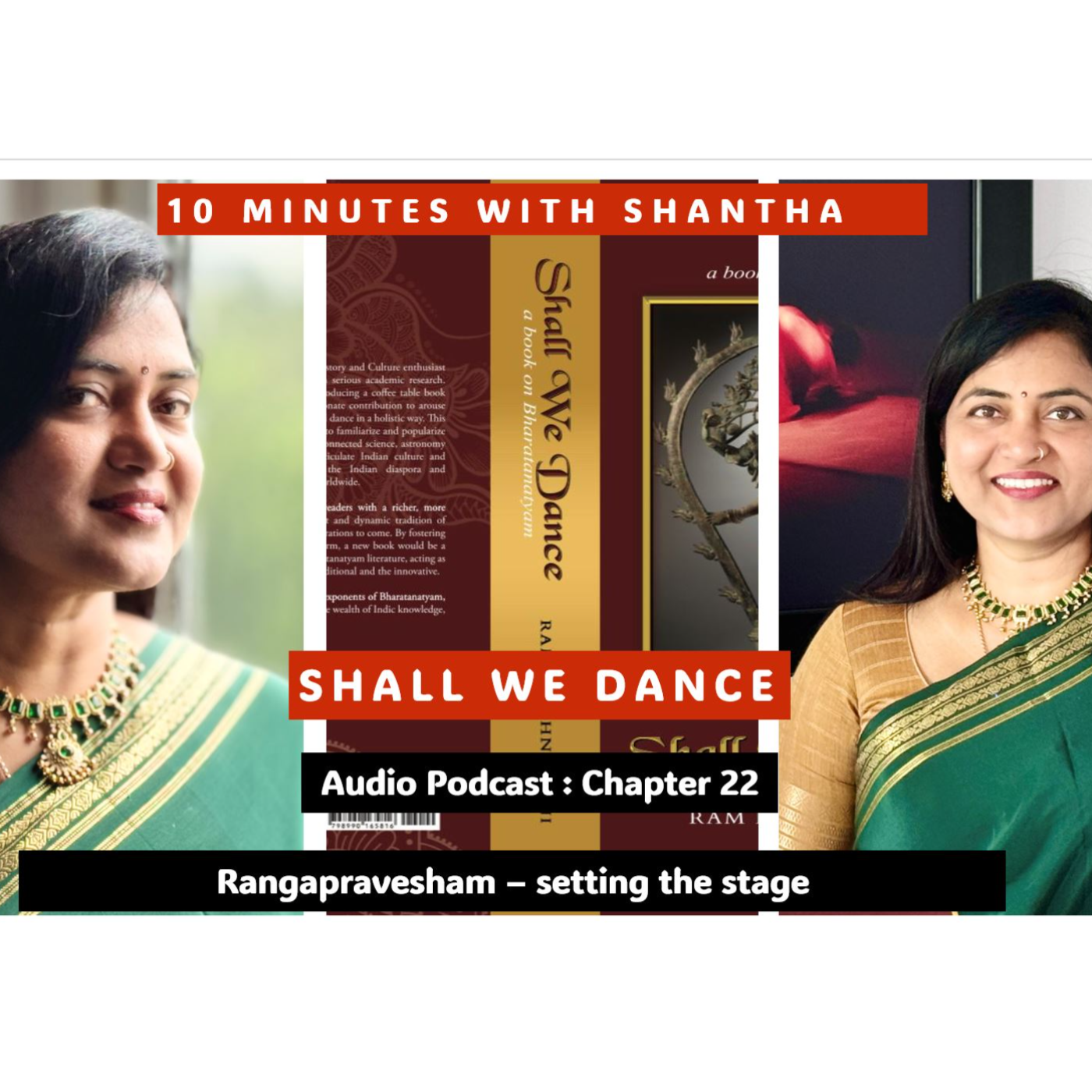 Shall We Dance - Book Teaser22. 10 Minutes With Shantha - Chapter 22 Summary - Rangapravesham - setting the stageNarrated by Shantha.In this audiopodcast, Shantha takes listeners on a journey through Bharatanatyam’s transformation from sacred temple dance to a dynamic modern art form. She delves into how contemporary themes like gender identity and social justice are woven into performances. The role of technology in enhancing Bharatanatyam with multimedia and live music is explored. She discusses innovative use of props, costumes, and the breaking of traditional gender roles in dance. Collaborations with artists from different fields bring fresh perspectives to Bharatanatyam. Shantha provides insights into the structure of a traditional recital, fr...2025-02-2305 min
Shall We Dance - Book Teaser22. 10 Minutes With Shantha - Chapter 22 Summary - Rangapravesham - setting the stageNarrated by Shantha.In this audiopodcast, Shantha takes listeners on a journey through Bharatanatyam’s transformation from sacred temple dance to a dynamic modern art form. She delves into how contemporary themes like gender identity and social justice are woven into performances. The role of technology in enhancing Bharatanatyam with multimedia and live music is explored. She discusses innovative use of props, costumes, and the breaking of traditional gender roles in dance. Collaborations with artists from different fields bring fresh perspectives to Bharatanatyam. Shantha provides insights into the structure of a traditional recital, fr...2025-02-2305 min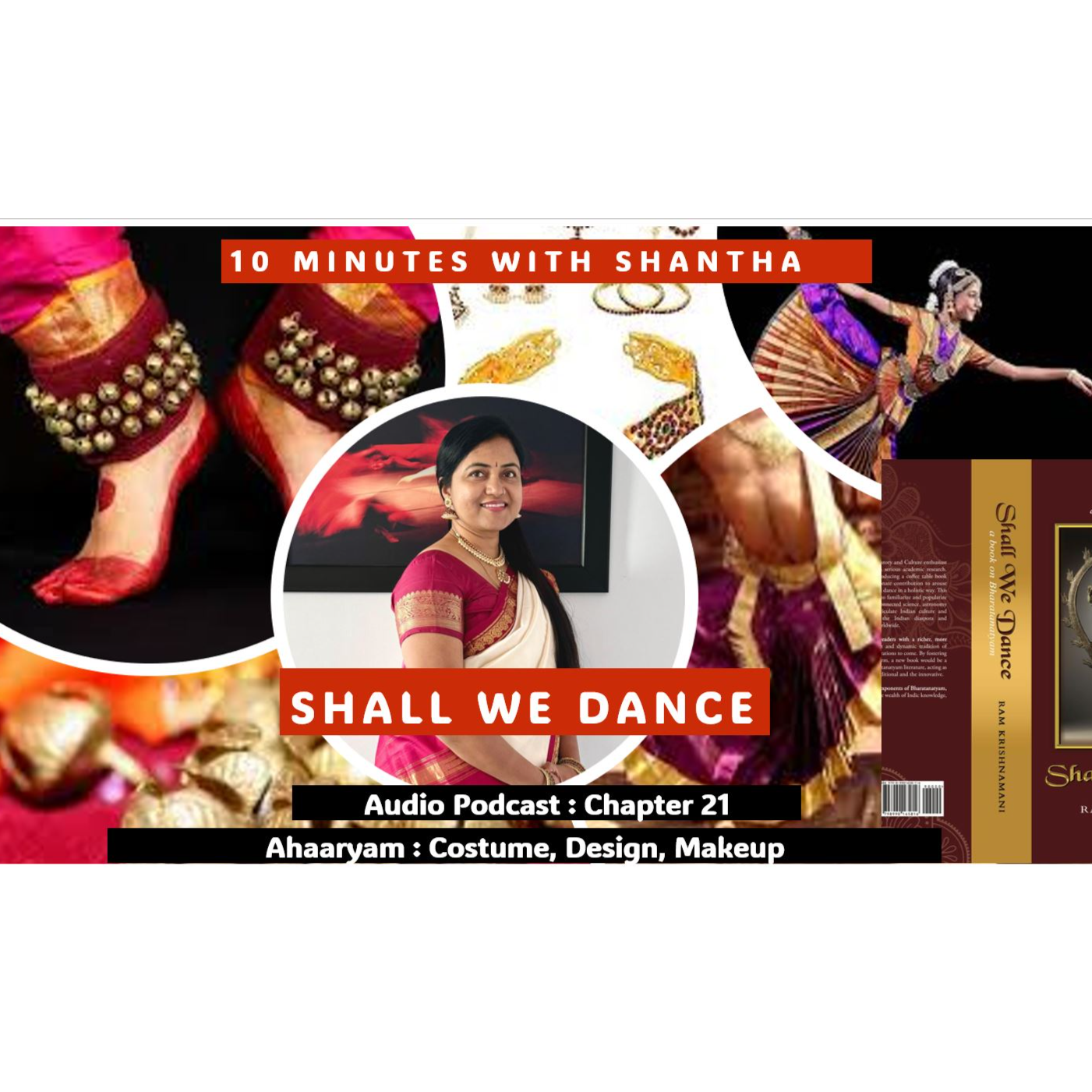 Shall We Dance - Book Teaser21. 10 Minutes With Shantha - Chapter 21 Summary - Aaharyam, Costume, MakeupNarrated by Shantha : Bharatanatyam costumes are more than just outfits—they bring the dance to life! Inspired by Tamil bridal wear, they are designed for graceful movement and elegance. Dancers wear vibrant silk, dazzling jewelry, and bold make-up to highlight expressions and emotions. Every piece, from the shimmering waist belt to jingling anklets, adds beauty and rhythm to the performance. The Natya Shastra, an ancient dance text, guides how costumes and stages are prepared with special rituals and traditions. Henna-stained feet, flower-adorned hair, and colorful props make the storytelling even more magical. ...2025-02-1605 min
Shall We Dance - Book Teaser21. 10 Minutes With Shantha - Chapter 21 Summary - Aaharyam, Costume, MakeupNarrated by Shantha : Bharatanatyam costumes are more than just outfits—they bring the dance to life! Inspired by Tamil bridal wear, they are designed for graceful movement and elegance. Dancers wear vibrant silk, dazzling jewelry, and bold make-up to highlight expressions and emotions. Every piece, from the shimmering waist belt to jingling anklets, adds beauty and rhythm to the performance. The Natya Shastra, an ancient dance text, guides how costumes and stages are prepared with special rituals and traditions. Henna-stained feet, flower-adorned hair, and colorful props make the storytelling even more magical. ...2025-02-1605 min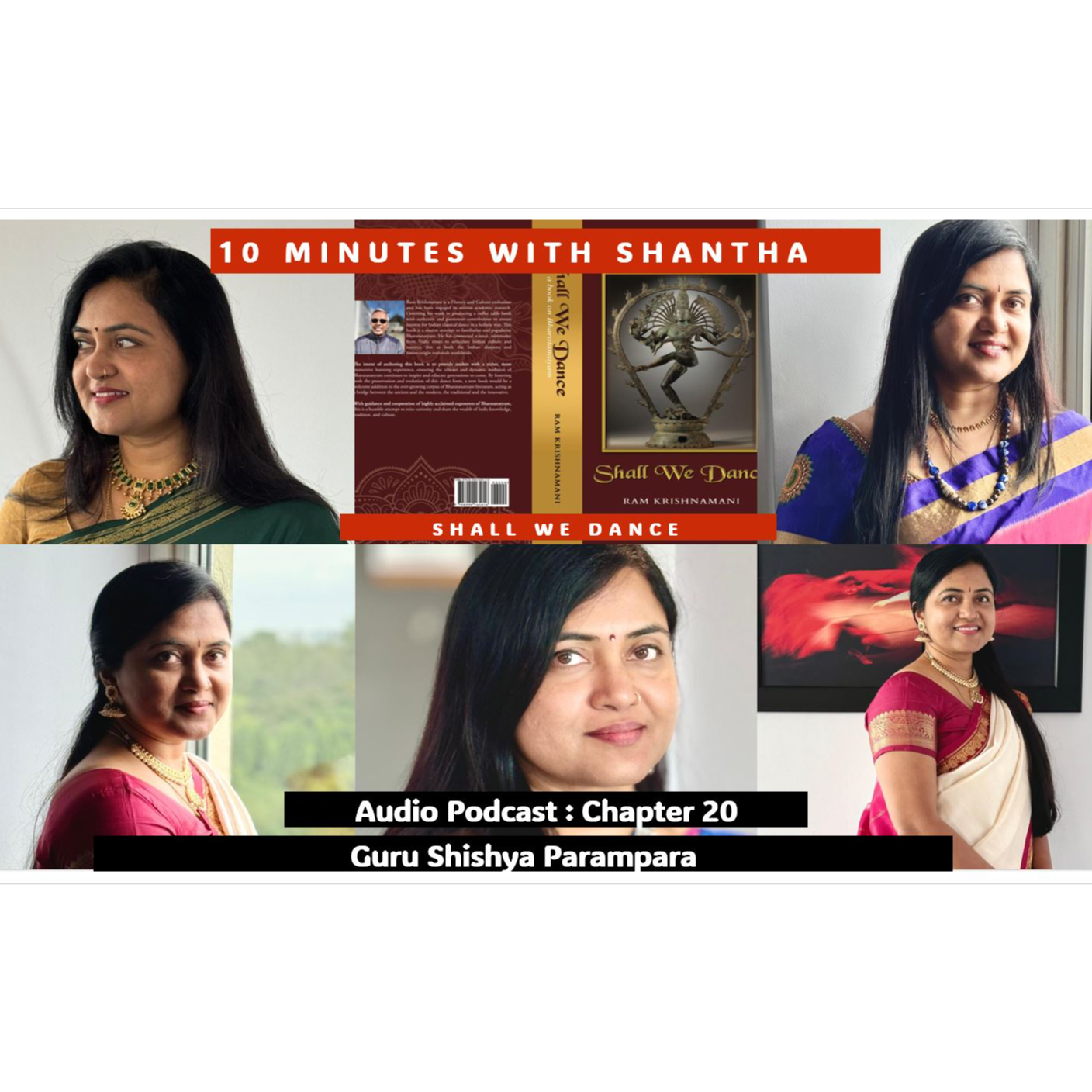 Shall We Dance - Book Teaser20. 10 Minutes With Shantha - Chapter 20 Summary - Guru Shishya ParamparaAudio Podcast : Chapter 20 - Guru Shishya ParamparaIn this podcast Shantha explains about "The Guru Shishya Parampara in Bharatanatyam is a deeply revered tradition built on trust, respect, and devotion. The Guru is not just a teacher but a mentor, guide, and role model who imparts not only dance techniques but also cultural, ethical, and spiritual wisdom. This learning process is highly personalized, with the Guru shaping the Shishya’s journey by identifying strengths, refining weaknesses, and providing constant feedback. Shantha further explains about how knowledge is passed down orally, making the Gurukshetra—the...2025-02-1004 min
Shall We Dance - Book Teaser20. 10 Minutes With Shantha - Chapter 20 Summary - Guru Shishya ParamparaAudio Podcast : Chapter 20 - Guru Shishya ParamparaIn this podcast Shantha explains about "The Guru Shishya Parampara in Bharatanatyam is a deeply revered tradition built on trust, respect, and devotion. The Guru is not just a teacher but a mentor, guide, and role model who imparts not only dance techniques but also cultural, ethical, and spiritual wisdom. This learning process is highly personalized, with the Guru shaping the Shishya’s journey by identifying strengths, refining weaknesses, and providing constant feedback. Shantha further explains about how knowledge is passed down orally, making the Gurukshetra—the...2025-02-1004 min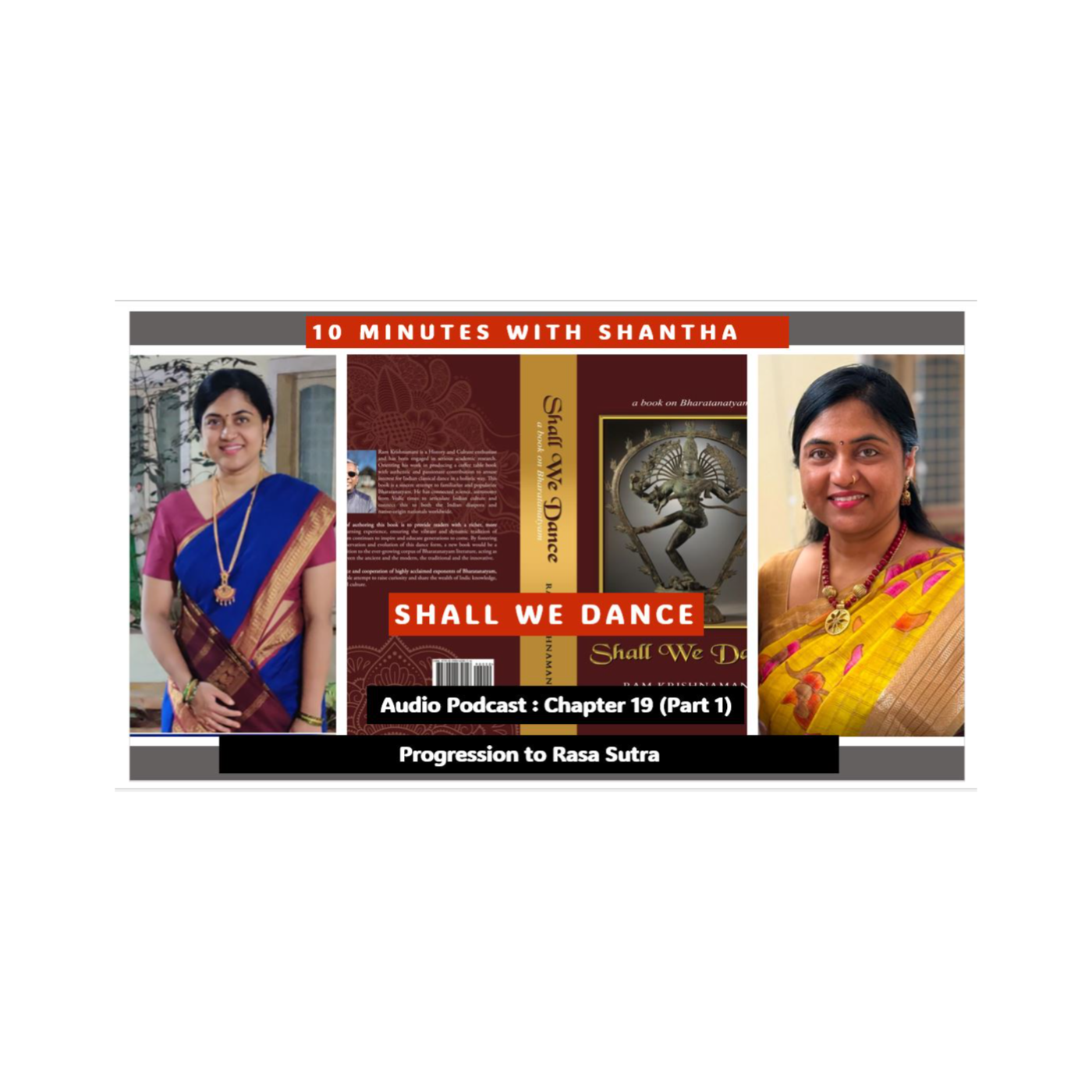 Shall We Dance - Book Teaser10 Minutes With Shantha - Chapter 19 (Episode 1)) Summary - Progression to Rasa Sutra10 Minutes With Shantha : Chapter 19 Summary - Progression to Rasa SutraIn the 4 part Audio podcast, Shantha introduces the concept of Progression to Rasa Sutra. The center of the whole performance is the User Experience in the narrative of watching a Bharatanatyam Performance. This chapter explores Rasa Sutra in Indian performing arts, emphasizing emotional depth in dance as described in the Natya Shastra. It explains how Vibhav (determinants) trigger emotions, which are expressed through Anubhav (gestures and expressions) and enriched by Vyabhichari Bhavas (transitory states). Shantha explains how seamless is blending of...2025-02-0306 min
Shall We Dance - Book Teaser10 Minutes With Shantha - Chapter 19 (Episode 1)) Summary - Progression to Rasa Sutra10 Minutes With Shantha : Chapter 19 Summary - Progression to Rasa SutraIn the 4 part Audio podcast, Shantha introduces the concept of Progression to Rasa Sutra. The center of the whole performance is the User Experience in the narrative of watching a Bharatanatyam Performance. This chapter explores Rasa Sutra in Indian performing arts, emphasizing emotional depth in dance as described in the Natya Shastra. It explains how Vibhav (determinants) trigger emotions, which are expressed through Anubhav (gestures and expressions) and enriched by Vyabhichari Bhavas (transitory states). Shantha explains how seamless is blending of...2025-02-0306 min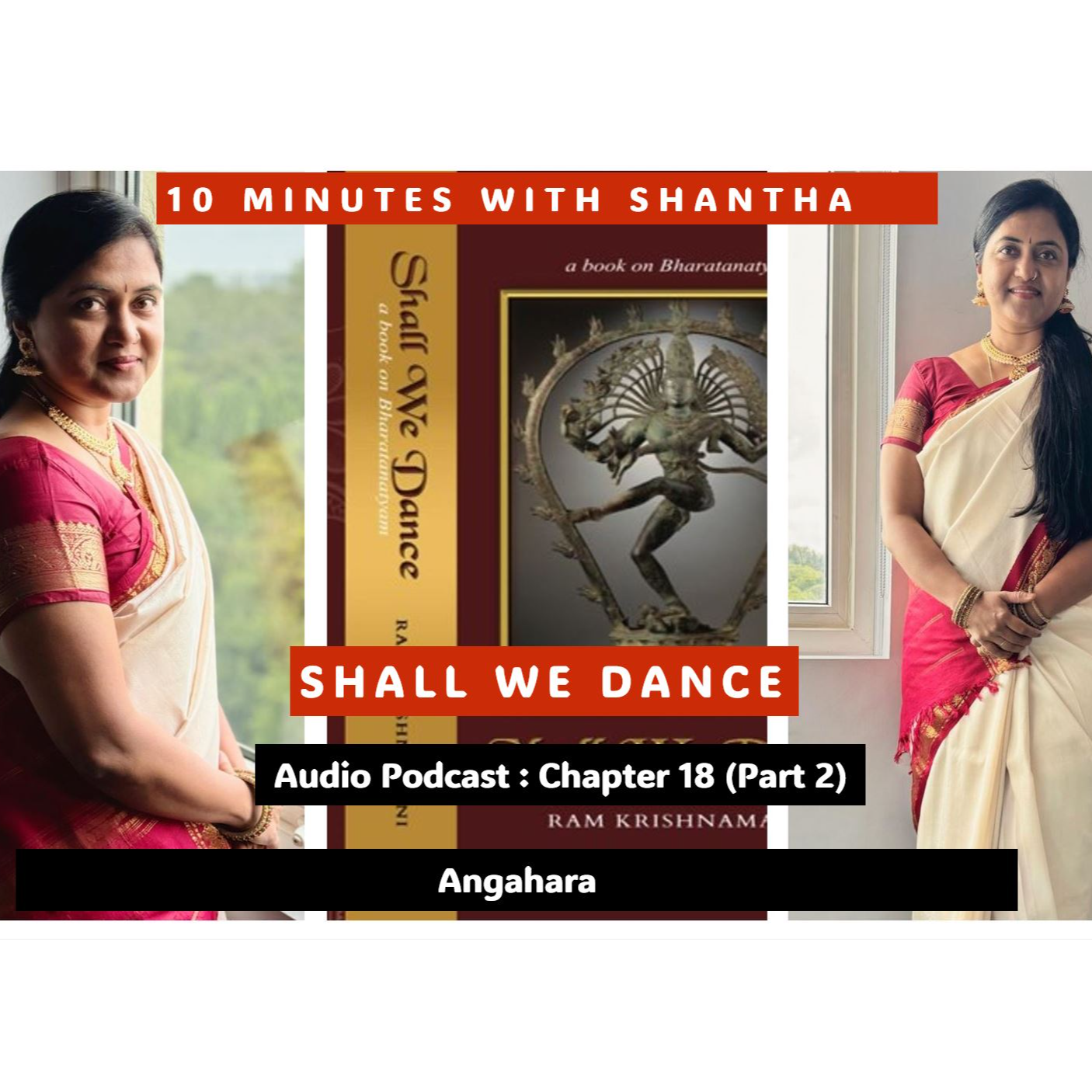 Shall We Dance - Book Teaser10 Minutes With Shantha - Chapter 18 (Episode 2) Summary - Angaharas10 Minutes With Shantha : Chapter 18 (Podcast 2)ANGAHARAS :Angaharas are intricate sequences in Bharatanatyam, blending mudras, karanas, and gatis to create fluid, rhythmic movements. Rooted in the Natya Shastra, they elevate a dancers’ technique while enhancing storytelling and emotional expression. This podcast explores their role in balancing tradition and creativity, blending structure with improvisation. Experts share insights on their significance in modern choreography. We also reflect on the spiritual and cultural depth Angaharas bring to Bharatanatyam, making them timeless.2025-01-2806 min
Shall We Dance - Book Teaser10 Minutes With Shantha - Chapter 18 (Episode 2) Summary - Angaharas10 Minutes With Shantha : Chapter 18 (Podcast 2)ANGAHARAS :Angaharas are intricate sequences in Bharatanatyam, blending mudras, karanas, and gatis to create fluid, rhythmic movements. Rooted in the Natya Shastra, they elevate a dancers’ technique while enhancing storytelling and emotional expression. This podcast explores their role in balancing tradition and creativity, blending structure with improvisation. Experts share insights on their significance in modern choreography. We also reflect on the spiritual and cultural depth Angaharas bring to Bharatanatyam, making them timeless.2025-01-2806 min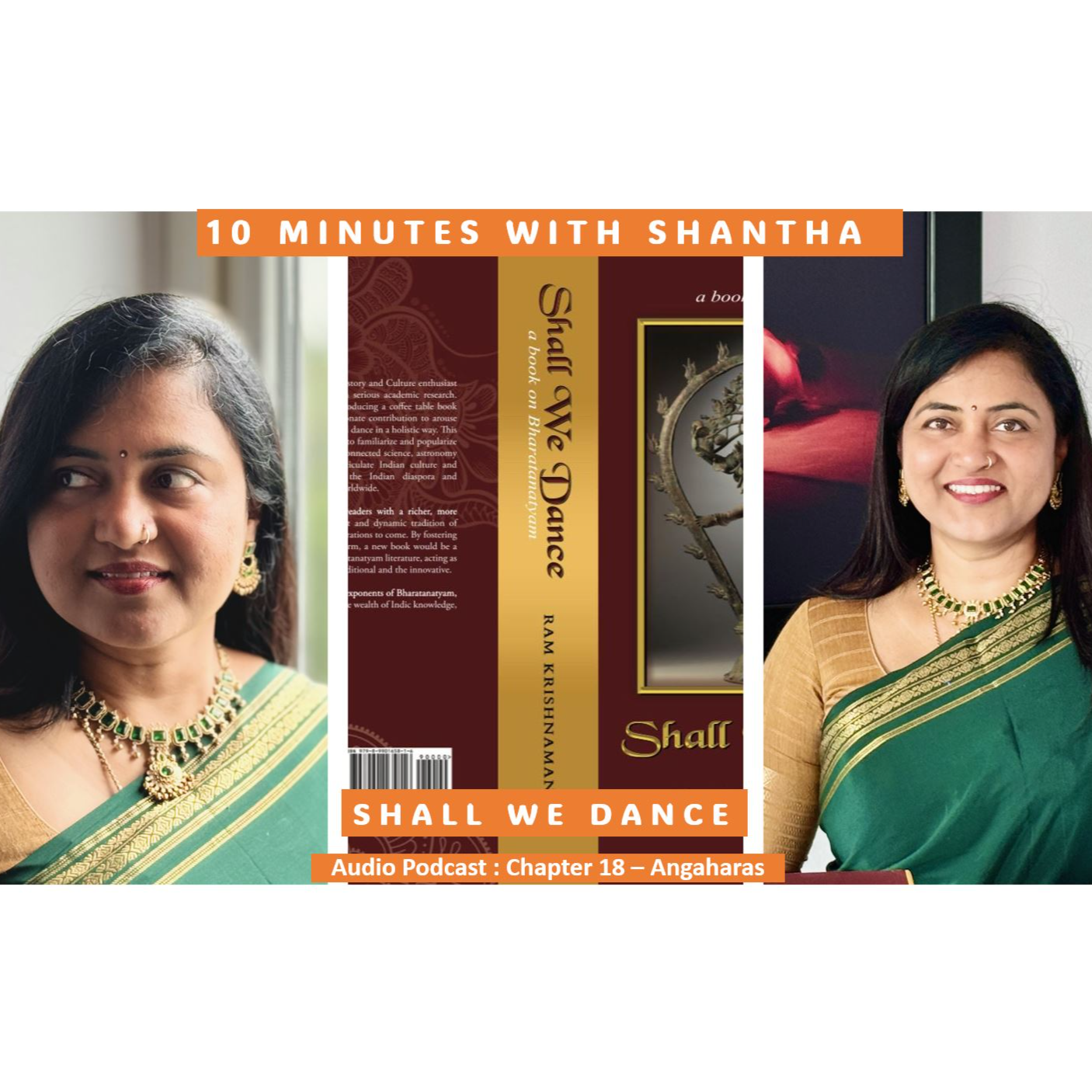 Shall We Dance - Book Teaser10 Minutes With Shantha - Chapter 18 (Episode 1) Summary - AngaharasShantha discribes that you discover the importance of Angaharas when you move from one graceful adavu to the next.Every step you take becomes a vital thread woven into the larger tapestry of the dance. Your posture aligns precisely, reflecting the discipline and devotion that Bharatanatyam demands. In each fluid sequence, you feel a spiritual energy that transcends mere physical movement.Angaharas, to you, are not just connections; they are the pulsing heartbeat that binds technique and emotion.Shantha describes that as you practice, you realize how these transitions reveal the deeper narratives...2025-01-1904 min
Shall We Dance - Book Teaser10 Minutes With Shantha - Chapter 18 (Episode 1) Summary - AngaharasShantha discribes that you discover the importance of Angaharas when you move from one graceful adavu to the next.Every step you take becomes a vital thread woven into the larger tapestry of the dance. Your posture aligns precisely, reflecting the discipline and devotion that Bharatanatyam demands. In each fluid sequence, you feel a spiritual energy that transcends mere physical movement.Angaharas, to you, are not just connections; they are the pulsing heartbeat that binds technique and emotion.Shantha describes that as you practice, you realize how these transitions reveal the deeper narratives...2025-01-1904 min Shall We Dance - Book Teaser10 Minutes With Shantha - Chapter 17 Summary - Dhwani, Swara, Raagam, Nattuwangam10 Minutes With Shantha : Chapter 17 Summary - Dwani, Swara, Raagam, NattuwangamIn this episode, Shantha mphasizes the profound connection between sound and emotion in Bharatanatyam. She explains how Dwani (resonance) is more than just sound; it is the essence that enhances the dancer's expression, created through rhythmic footwork, expressive hand gestures, and vocal intonations. The chapter dives into the physics of sound—pitch, tone, and rhythm—and its spiritual dimensions, where sound becomes a bridge connecting the dancer to the divine. Nature’s influence is beautifully highlighted through Swara, where musical notes are derived from n...2025-01-1207 min
Shall We Dance - Book Teaser10 Minutes With Shantha - Chapter 17 Summary - Dhwani, Swara, Raagam, Nattuwangam10 Minutes With Shantha : Chapter 17 Summary - Dwani, Swara, Raagam, NattuwangamIn this episode, Shantha mphasizes the profound connection between sound and emotion in Bharatanatyam. She explains how Dwani (resonance) is more than just sound; it is the essence that enhances the dancer's expression, created through rhythmic footwork, expressive hand gestures, and vocal intonations. The chapter dives into the physics of sound—pitch, tone, and rhythm—and its spiritual dimensions, where sound becomes a bridge connecting the dancer to the divine. Nature’s influence is beautifully highlighted through Swara, where musical notes are derived from n...2025-01-1207 min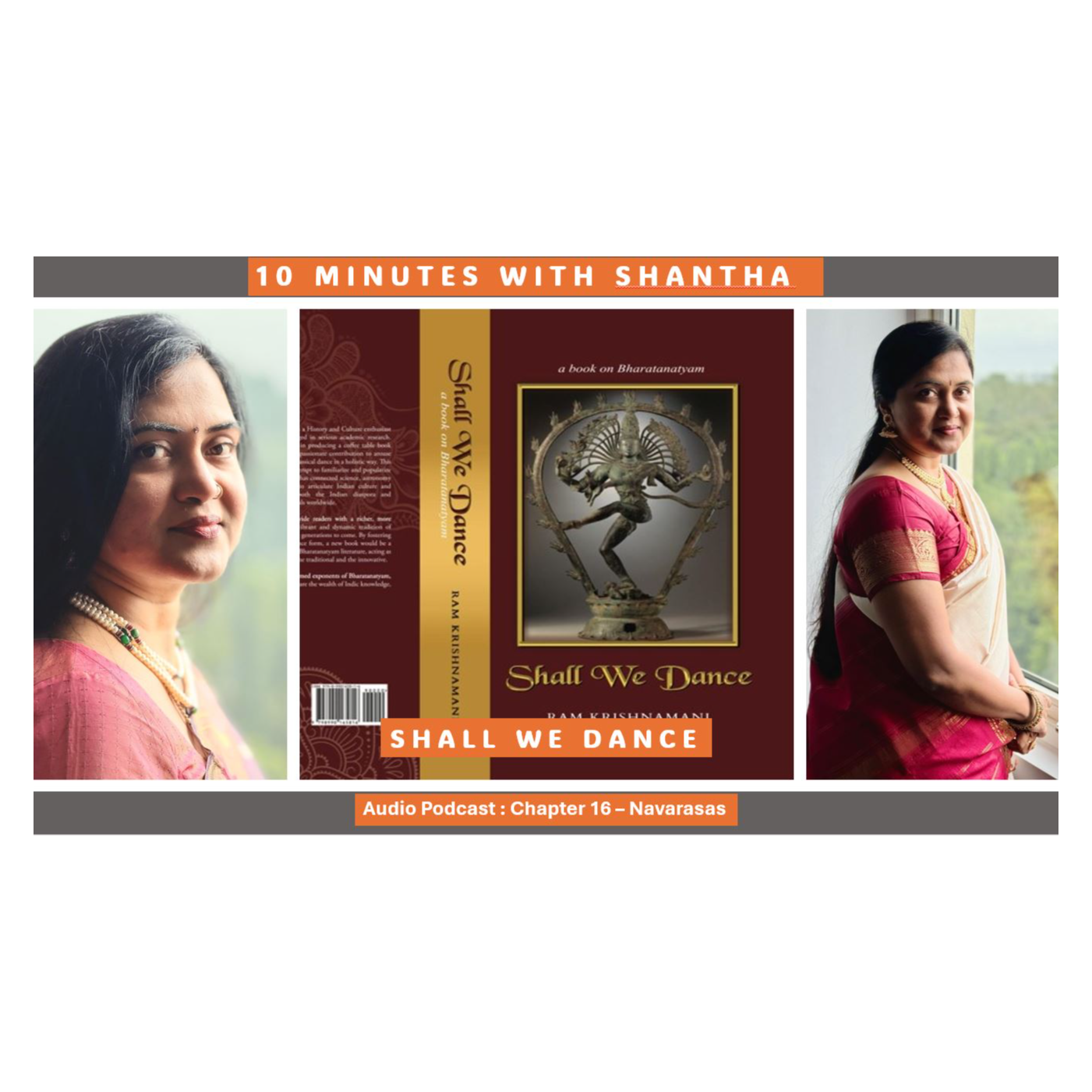 Shall We Dance - Book Teaser10 Minutes with Shantha : Chapter 16 Summary - NavarasasShall We Dance : Chapter 16 Summary : NavarasasShantha eloquently describes the Navarasas as the essence of Bharatanatyam, weaving emotions into a visual symphony. She explained how the nine rasas — Shringara (love), Hasya (laughter), Karuna (compassion), Raudra (anger), Veera (heroism), Bhayanaka (fear), Bibhatsa (disgust), Adbhuta (wonder), and Shanta (peace) — form the foundation of storytelling in this classical art form. Shantha emphasized that these emotions allow the dancer to connect deeply with the audience, transcending language and cultural barriers. Through precise expressions and gestures, each rasa brings a unique shade of human experience to life. Sh...2025-01-0507 min
Shall We Dance - Book Teaser10 Minutes with Shantha : Chapter 16 Summary - NavarasasShall We Dance : Chapter 16 Summary : NavarasasShantha eloquently describes the Navarasas as the essence of Bharatanatyam, weaving emotions into a visual symphony. She explained how the nine rasas — Shringara (love), Hasya (laughter), Karuna (compassion), Raudra (anger), Veera (heroism), Bhayanaka (fear), Bibhatsa (disgust), Adbhuta (wonder), and Shanta (peace) — form the foundation of storytelling in this classical art form. Shantha emphasized that these emotions allow the dancer to connect deeply with the audience, transcending language and cultural barriers. Through precise expressions and gestures, each rasa brings a unique shade of human experience to life. Sh...2025-01-0507 min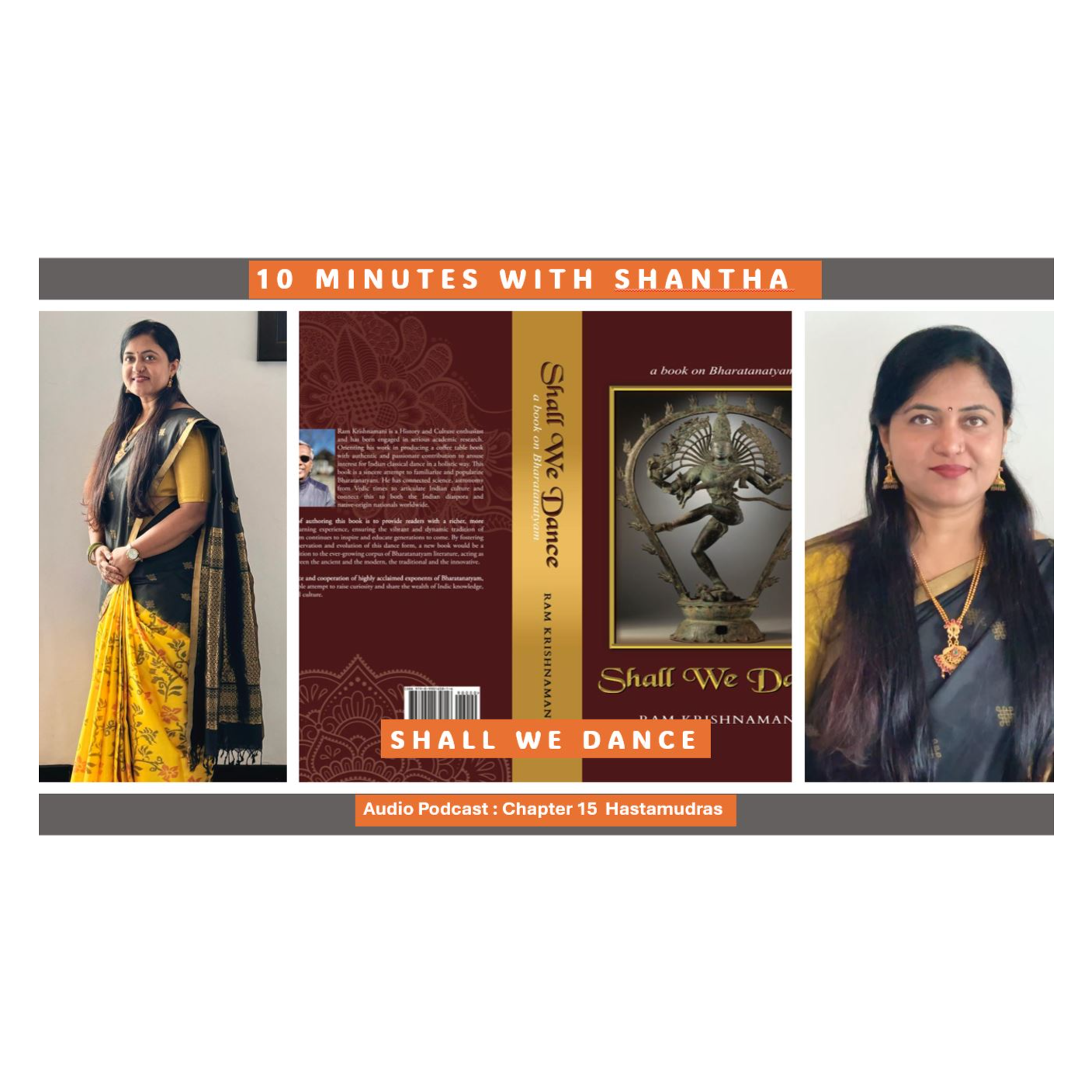 Shall We Dance - Book Teaser10 Minutes with Shantha - Chapter 15 Summary - Hasta Mudras10 Minutes With ShanthaChapter Summary 15 - Hasta MudrasHasta Mudras are the soul of Bharatanatyam, where every gesture tells a story, holds meaning, and evokes emotion. These gestures form a unique language, allowing dancers to communicate the unspoken. They are categorized as Asamyuta Hastas (single-hand) and Samyuta Hastas (double-hand), symbolizing everything from gods and nature to human emotions. Shantha often says that using mudras feels like painting vivid pictures in the air, immersing the audience in the narrative. Each mudra harmonizes with the eyes, breath, and expressions to create...2024-12-2904 min
Shall We Dance - Book Teaser10 Minutes with Shantha - Chapter 15 Summary - Hasta Mudras10 Minutes With ShanthaChapter Summary 15 - Hasta MudrasHasta Mudras are the soul of Bharatanatyam, where every gesture tells a story, holds meaning, and evokes emotion. These gestures form a unique language, allowing dancers to communicate the unspoken. They are categorized as Asamyuta Hastas (single-hand) and Samyuta Hastas (double-hand), symbolizing everything from gods and nature to human emotions. Shantha often says that using mudras feels like painting vivid pictures in the air, immersing the audience in the narrative. Each mudra harmonizes with the eyes, breath, and expressions to create...2024-12-2904 min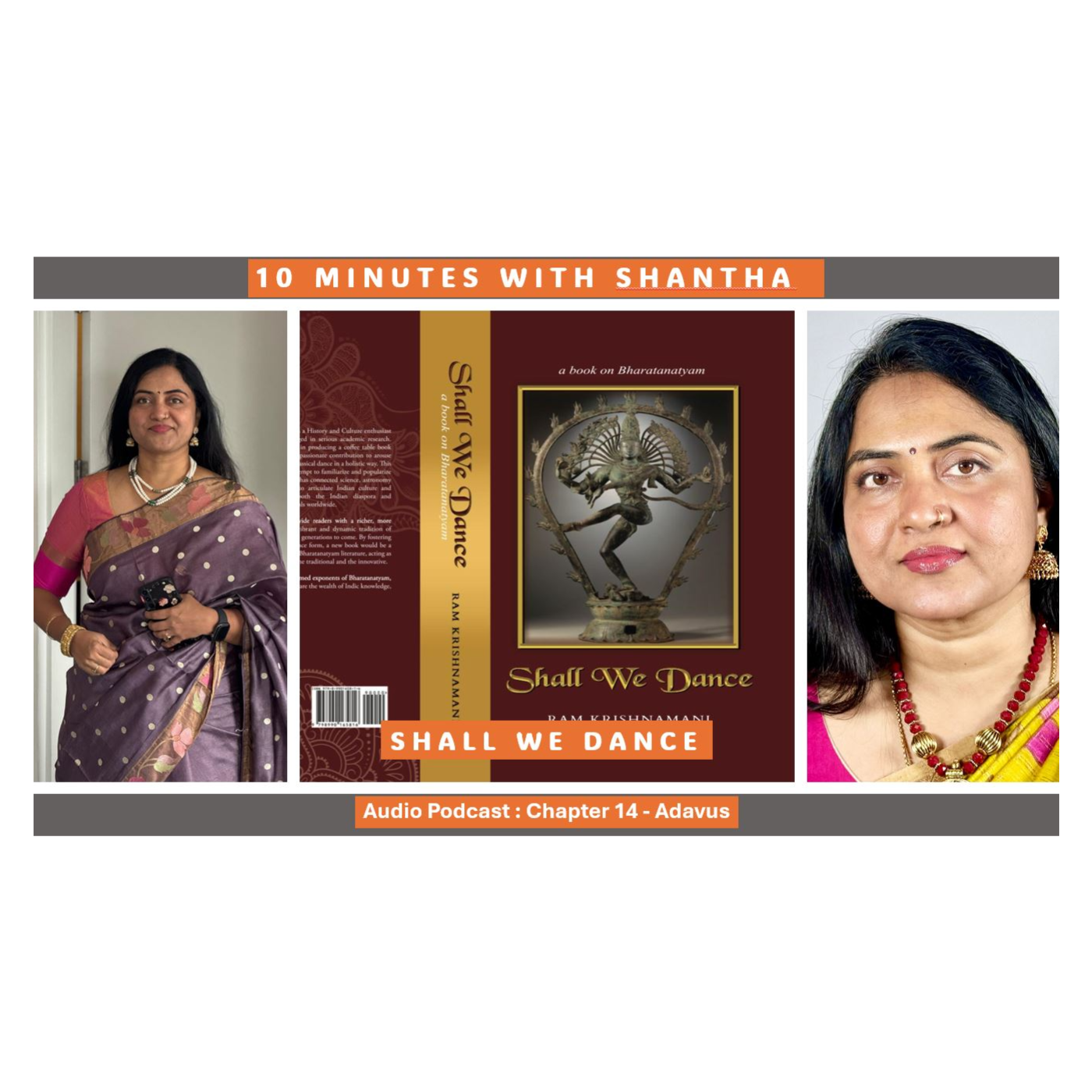 Shall We Dance - Book Teaser10 Minutes with Shantha : Chapter 14 Summary - AdavusChapter 14 : Adavus - Shall We DanceIn this Chapter Shantha explores and explains about Adavus, the fundamental steps in Bharatanatyam, combining rhythmic footwork, hand gestures, and body movements. She explains that Adavus are the building blocks for choreography, enabling dancers to master balance, precision, and grace. Practicing Adavus develops coordination, posture, and stamina, forming the foundation for advanced sequences like jathis and varnams. Each Adavu is performed in specific rhythmic cycles, deepening the dancer’s understanding of tala (rhythm). They also improve focus and discipline, essential for ex...2024-12-2205 min
Shall We Dance - Book Teaser10 Minutes with Shantha : Chapter 14 Summary - AdavusChapter 14 : Adavus - Shall We DanceIn this Chapter Shantha explores and explains about Adavus, the fundamental steps in Bharatanatyam, combining rhythmic footwork, hand gestures, and body movements. She explains that Adavus are the building blocks for choreography, enabling dancers to master balance, precision, and grace. Practicing Adavus develops coordination, posture, and stamina, forming the foundation for advanced sequences like jathis and varnams. Each Adavu is performed in specific rhythmic cycles, deepening the dancer’s understanding of tala (rhythm). They also improve focus and discipline, essential for ex...2024-12-2205 min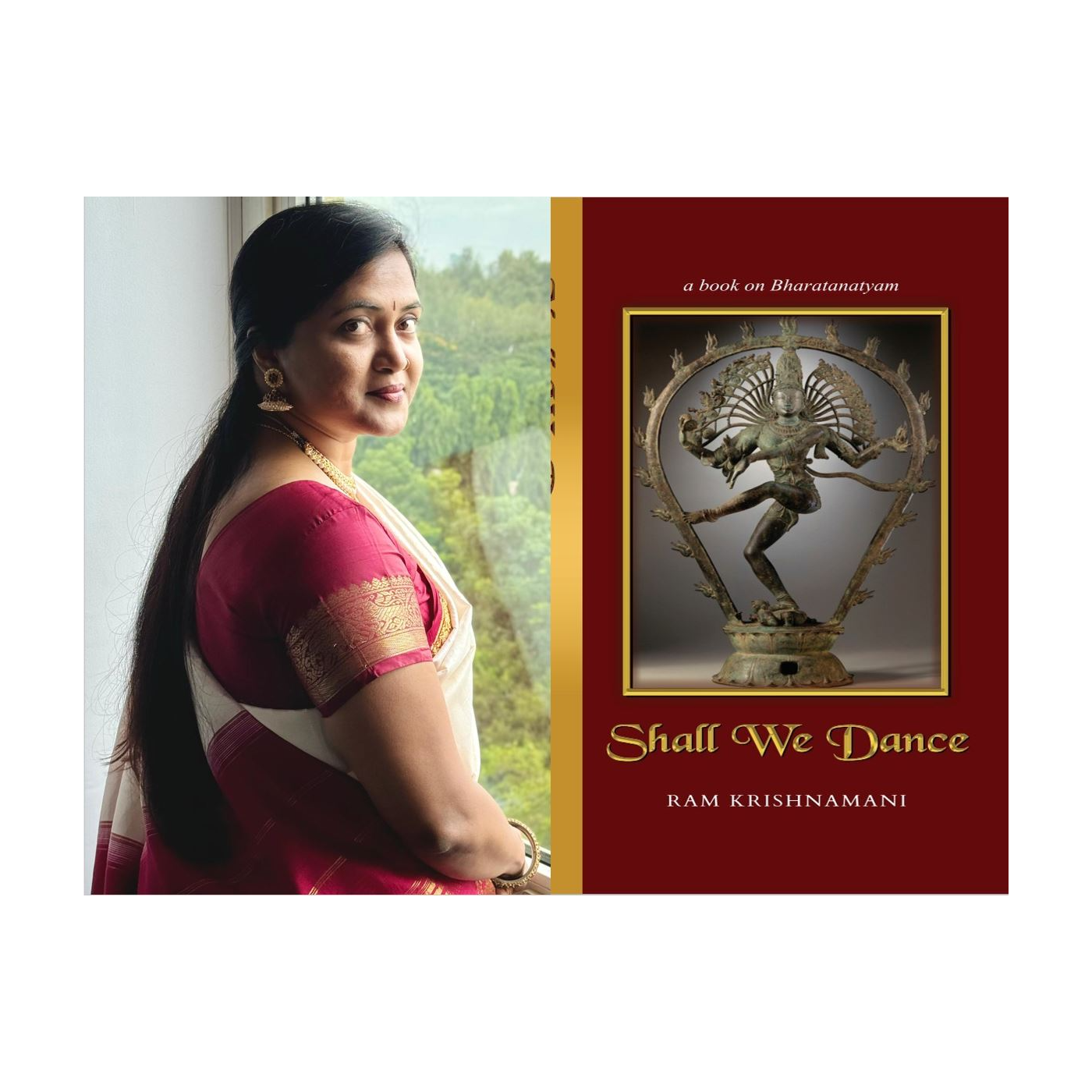 Shall We Dance - Book Teaser10 Minutes With Shantha : Chapter 13 Summary - KaranasThis chapter delves into the significance of dance imagery in Bharatanatyam, focusing on the 108 Karanas, the foundational dance movements described in the Natya Shastra. These Karanas, created by Lord Shiva in his cosmic dance form, are believed to lead practitioners toward spiritual liberation. The chapter explores the sacred origins of the Karanas, their role in purifying the soul, and their physical components, including specific arm, leg, and body movements. The chapter emphasizes the deeper spiritual and ritual meanings of dance sculptures in South Indian temples, particularly those with 108 Karana depictions, such as in Thanjavur and Chidambaram. 2024-12-1503 min
Shall We Dance - Book Teaser10 Minutes With Shantha : Chapter 13 Summary - KaranasThis chapter delves into the significance of dance imagery in Bharatanatyam, focusing on the 108 Karanas, the foundational dance movements described in the Natya Shastra. These Karanas, created by Lord Shiva in his cosmic dance form, are believed to lead practitioners toward spiritual liberation. The chapter explores the sacred origins of the Karanas, their role in purifying the soul, and their physical components, including specific arm, leg, and body movements. The chapter emphasizes the deeper spiritual and ritual meanings of dance sculptures in South Indian temples, particularly those with 108 Karana depictions, such as in Thanjavur and Chidambaram. 2024-12-1503 min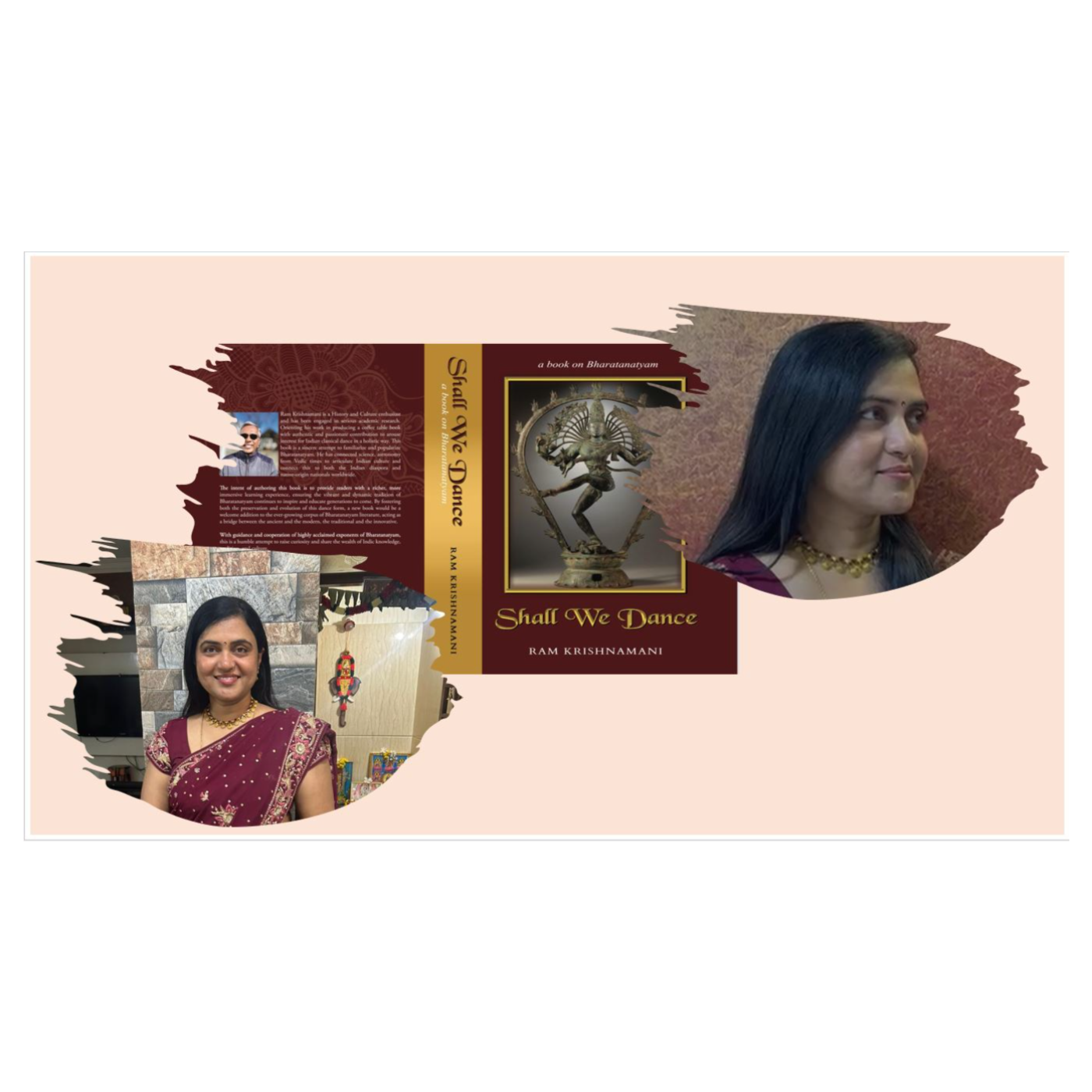 Shall We Dance - Book Teaser10 Minutes With Shantha : Chapter 12 Summary - Prelude to KaranasIn this Chapter, Shantha opens with Martha Graham's profound quote, "Dance is the hidden language of the soul of the body," underscoring the spiritual essence of Bharatanatyam. Anchored in the ancient Natya Shastra, it delves into the foundational concepts of Karanas—transitional movements embodying Shiva's divine dance. Shantha then goes on to discuss about the Natya Shastra serves as an authoritative guide on aesthetics, dramaturgy, and the interplay of Nritta, Nritya, and Natya, showcasing technical brilliance, emotive storytelling, and dramatic expression. Temple sculptures vividly illustrate the Karanas, integrating ritual, symbolism, and spiritual transformation. The chapter highlights the em...2024-12-0206 min
Shall We Dance - Book Teaser10 Minutes With Shantha : Chapter 12 Summary - Prelude to KaranasIn this Chapter, Shantha opens with Martha Graham's profound quote, "Dance is the hidden language of the soul of the body," underscoring the spiritual essence of Bharatanatyam. Anchored in the ancient Natya Shastra, it delves into the foundational concepts of Karanas—transitional movements embodying Shiva's divine dance. Shantha then goes on to discuss about the Natya Shastra serves as an authoritative guide on aesthetics, dramaturgy, and the interplay of Nritta, Nritya, and Natya, showcasing technical brilliance, emotive storytelling, and dramatic expression. Temple sculptures vividly illustrate the Karanas, integrating ritual, symbolism, and spiritual transformation. The chapter highlights the em...2024-12-0206 min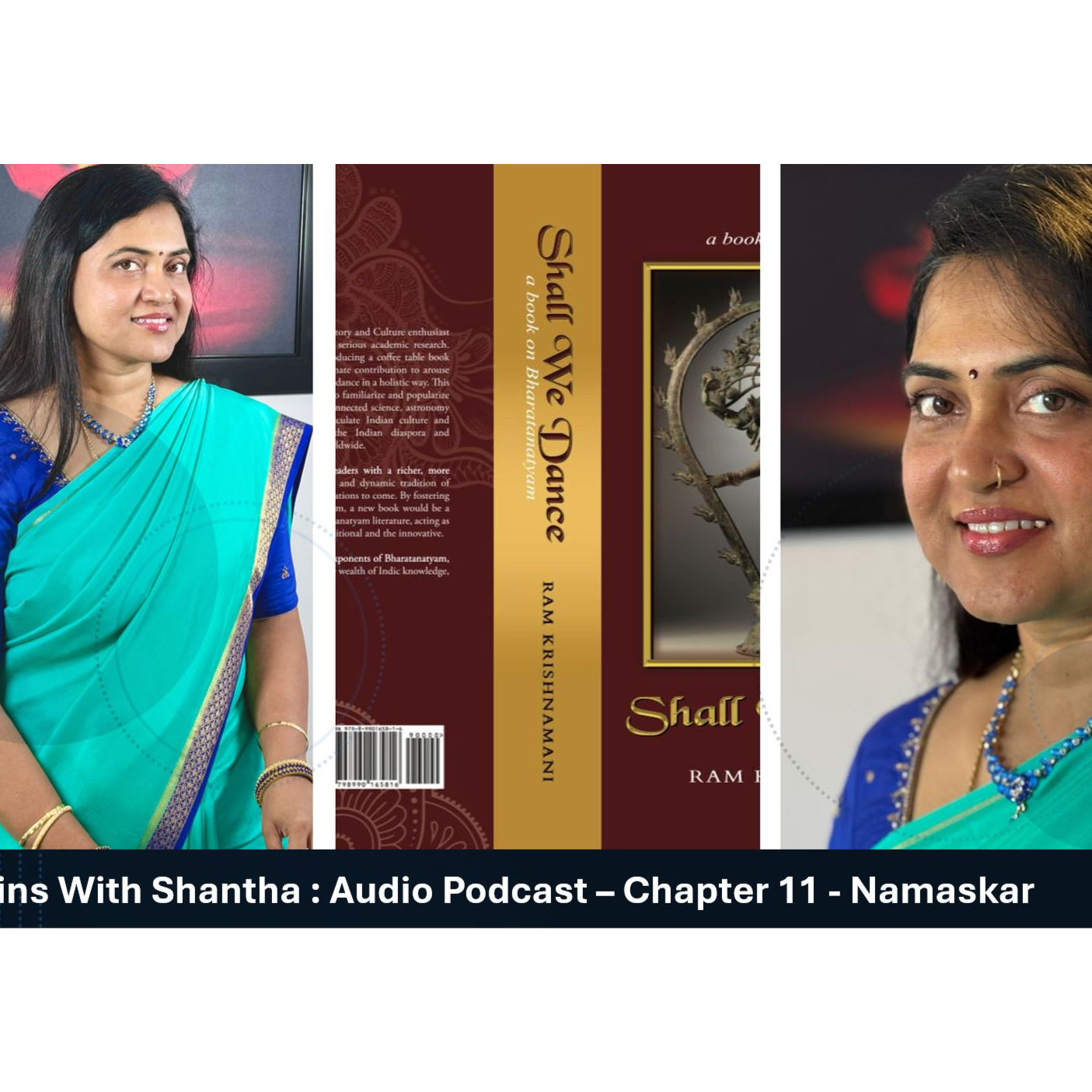 Shall We Dance - Book Teaser10 Minutes With Shantha : Chapter 11 Summary - NamaskarShall We Dance - Chapter 11 - NamaskarNarrated by Shantha Lakshmi.This chapter explores the foundational elements of Bharatanatyam, focusing on Namaskar and Adavus as vital components.Namaskar, a salutation rooted in tradition, signifies reverence to the divine, the guru, and the audience through symbolic gestures and spiritual consciousness. Adavus, the basic dance units, integrate posture, rhythm, and hand gestures, fostering technical skill and artistic coordination.Various types of Adavus, such as Tatta, Natta, and Mettu, are described with their unique rhythmic patterns and movements. The importance of Anga Shuddha (body...2024-11-2406 min
Shall We Dance - Book Teaser10 Minutes With Shantha : Chapter 11 Summary - NamaskarShall We Dance - Chapter 11 - NamaskarNarrated by Shantha Lakshmi.This chapter explores the foundational elements of Bharatanatyam, focusing on Namaskar and Adavus as vital components.Namaskar, a salutation rooted in tradition, signifies reverence to the divine, the guru, and the audience through symbolic gestures and spiritual consciousness. Adavus, the basic dance units, integrate posture, rhythm, and hand gestures, fostering technical skill and artistic coordination.Various types of Adavus, such as Tatta, Natta, and Mettu, are described with their unique rhythmic patterns and movements. The importance of Anga Shuddha (body...2024-11-2406 min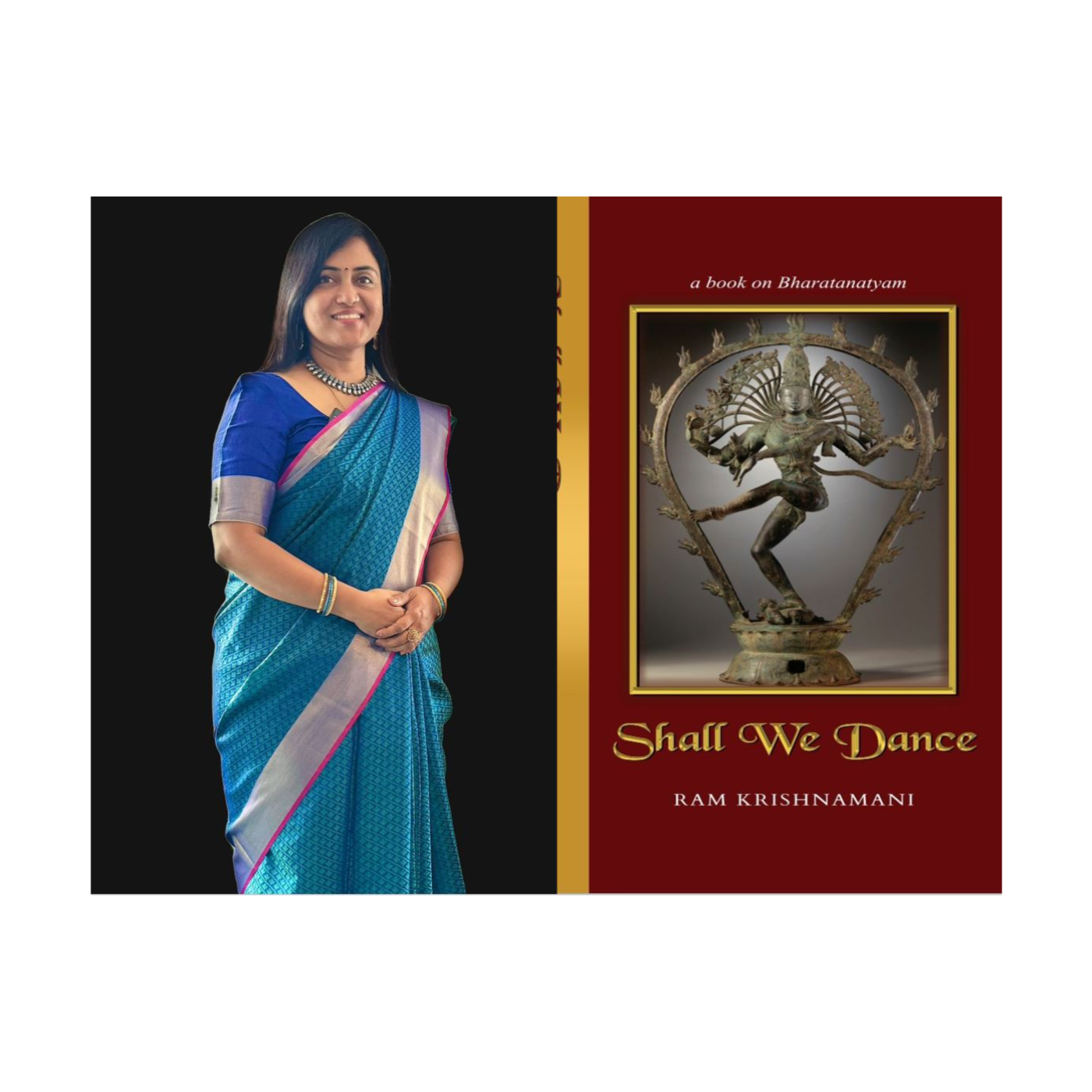 Shall We Dance - Book Teaser10 Minutes With Shantha : Chapter 10 Summary - Nritta, Nritya and NatyaNarrated by Shantha LakshmiChapter 10 of Shall We Dance explores the intricate art of Bharatanatyam, emphasizing its synthesis of various fine arts, including music, poetry, drama, painting, and sculpture. The chapter begins with a quote by Constanze Mozart, "Dancing is like dreaming with your feet," highlighting the expressive nature of dance. It discusses the universal instinct for dancing and how Bharatanatyam, rooted in the Natya Shastra, has achieved unparalleled technical excellence in India. The chapter delves into the fundamental aspects of Indian dance—Nrittya, Nritya, and Natya—along with the vigorous Tandavam and grac...2024-08-2006 min
Shall We Dance - Book Teaser10 Minutes With Shantha : Chapter 10 Summary - Nritta, Nritya and NatyaNarrated by Shantha LakshmiChapter 10 of Shall We Dance explores the intricate art of Bharatanatyam, emphasizing its synthesis of various fine arts, including music, poetry, drama, painting, and sculpture. The chapter begins with a quote by Constanze Mozart, "Dancing is like dreaming with your feet," highlighting the expressive nature of dance. It discusses the universal instinct for dancing and how Bharatanatyam, rooted in the Natya Shastra, has achieved unparalleled technical excellence in India. The chapter delves into the fundamental aspects of Indian dance—Nrittya, Nritya, and Natya—along with the vigorous Tandavam and grac...2024-08-2006 min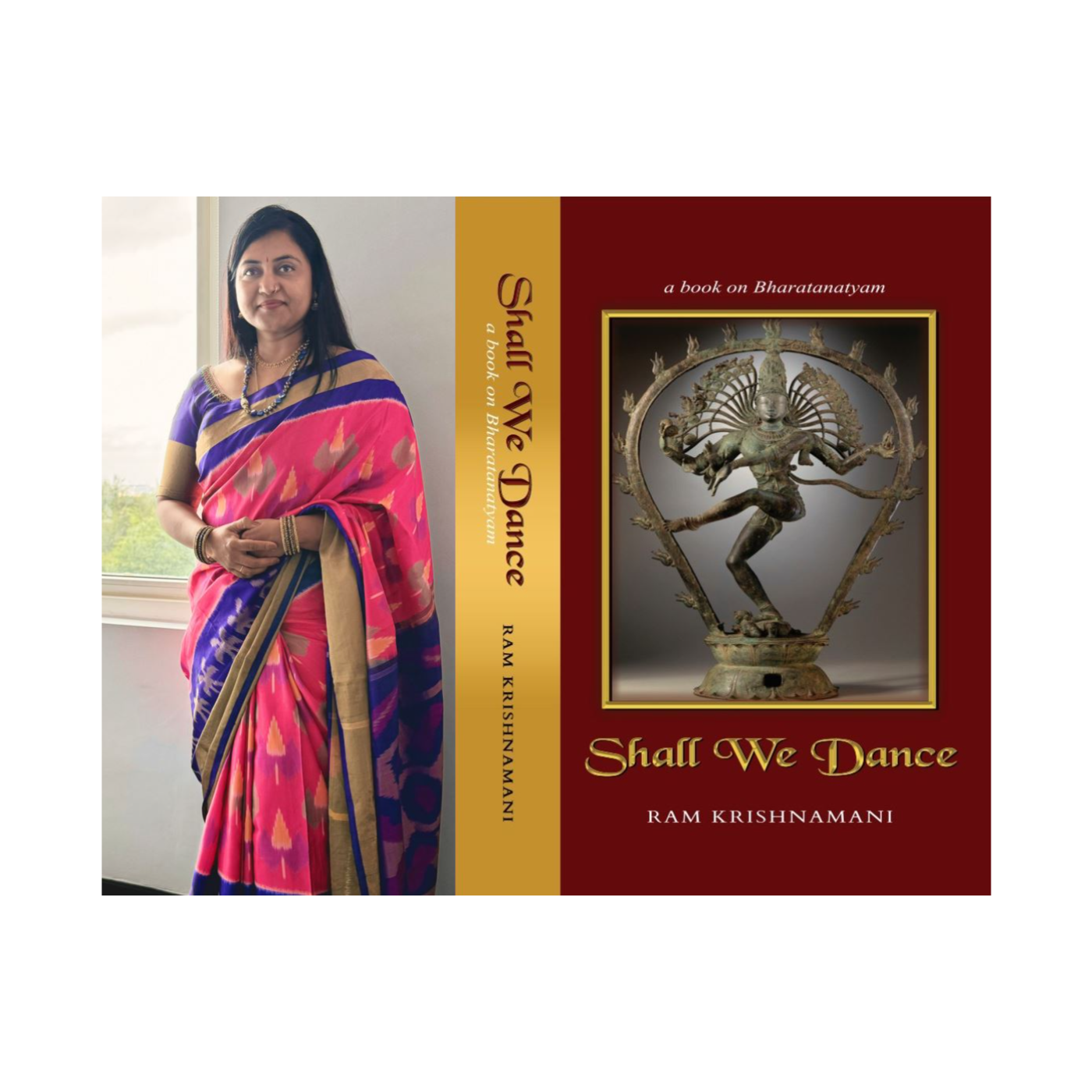 Shall We Dance - Book Teaser10 Minutes With Shantha : Chapter 09 Summary - Sanctity of Garba Griha at Thanjavur TempleNarrated by Shantha LakshmiChapter 9 of Shall We Dance explores the profound connection between the Brihadeshwara Temple in Thanjavur and the rise of Bharatanatyam in South India. The chapter delves into the symbolism of the temple's vimana (tower over the inner sanctum) and gopuram (entrance tower), emphasizing their spiritual significance. The vimana represents a cosmic mountain, symbolizing spiritual ascent, while the gopuram marks the transition from the material to the spiritual realm. The chapter highlights the deliberate placement of the 108 karanas (dance postures) in temple iconography, symbolizing Shiva's cosmic dance and yogic energy. It underscores...2024-08-2005 min
Shall We Dance - Book Teaser10 Minutes With Shantha : Chapter 09 Summary - Sanctity of Garba Griha at Thanjavur TempleNarrated by Shantha LakshmiChapter 9 of Shall We Dance explores the profound connection between the Brihadeshwara Temple in Thanjavur and the rise of Bharatanatyam in South India. The chapter delves into the symbolism of the temple's vimana (tower over the inner sanctum) and gopuram (entrance tower), emphasizing their spiritual significance. The vimana represents a cosmic mountain, symbolizing spiritual ascent, while the gopuram marks the transition from the material to the spiritual realm. The chapter highlights the deliberate placement of the 108 karanas (dance postures) in temple iconography, symbolizing Shiva's cosmic dance and yogic energy. It underscores...2024-08-2005 min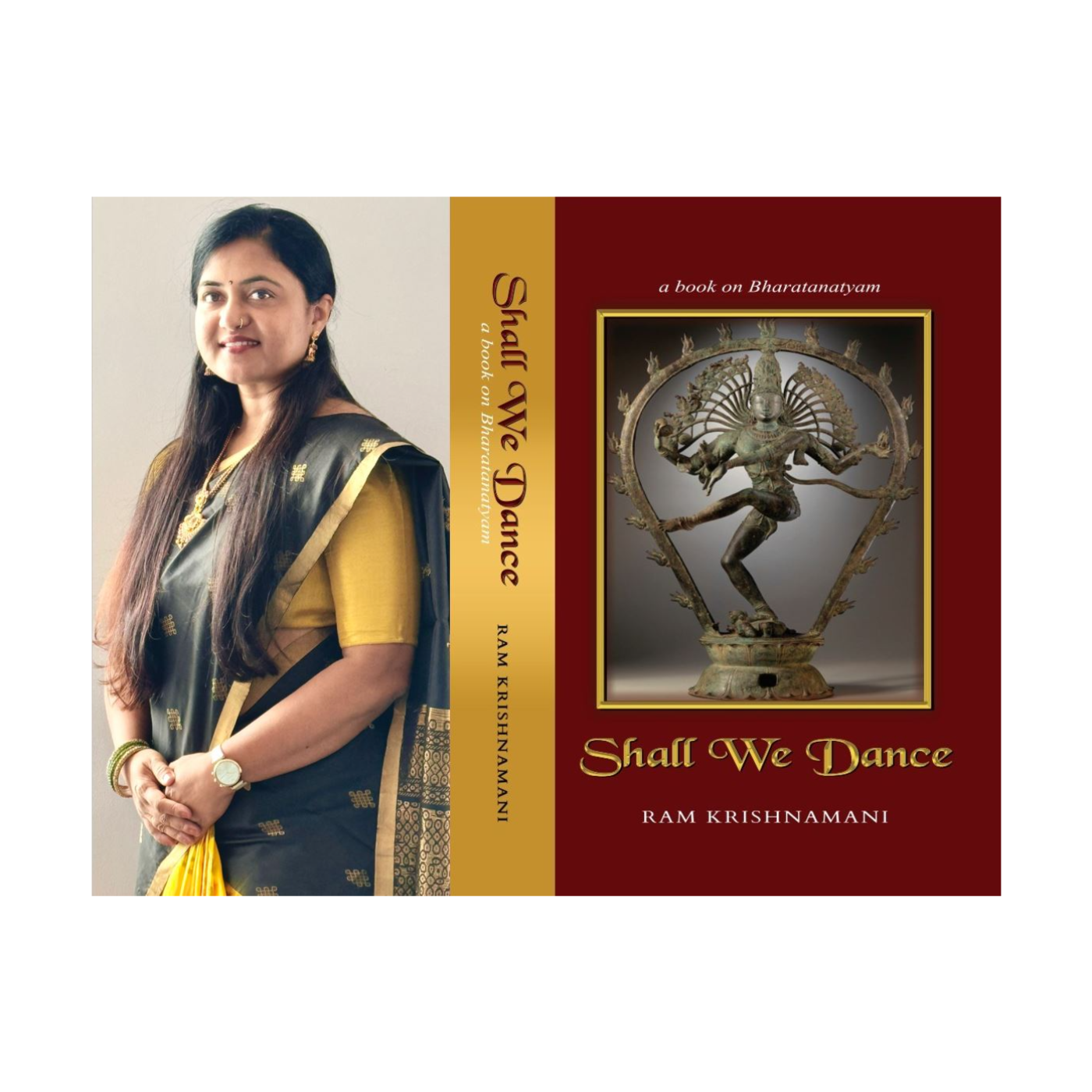 Shall We Dance - Book Teaser10 Minutes With Shantha : Chapter 08 Summary - Theoretical Framework of BharatanatyamNarrated by Shantha LakshmiChapter 8 of Shall We Dance explores the theoretical framework of Bharatanatyam, emphasizing the importance of understanding fundamental elements such as space, time, force, body, and form. These elements are crucial for mastering the art of Bharatanatyam, as outlined in A.G. Gilbert's Brain-Compatible Dance Education. The chapter delves into the Natya Shastra, an ancient Indian text attributed to Sage Bharata Muni, which serves as the primary guide for Bharatanatyam, covering drama, music, dance, and gestures.Key concepts include Adavus (basic dance units), Hastas (hand gestures), Abhinaya (expression), Nritta (pure...2024-08-2005 min
Shall We Dance - Book Teaser10 Minutes With Shantha : Chapter 08 Summary - Theoretical Framework of BharatanatyamNarrated by Shantha LakshmiChapter 8 of Shall We Dance explores the theoretical framework of Bharatanatyam, emphasizing the importance of understanding fundamental elements such as space, time, force, body, and form. These elements are crucial for mastering the art of Bharatanatyam, as outlined in A.G. Gilbert's Brain-Compatible Dance Education. The chapter delves into the Natya Shastra, an ancient Indian text attributed to Sage Bharata Muni, which serves as the primary guide for Bharatanatyam, covering drama, music, dance, and gestures.Key concepts include Adavus (basic dance units), Hastas (hand gestures), Abhinaya (expression), Nritta (pure...2024-08-2005 min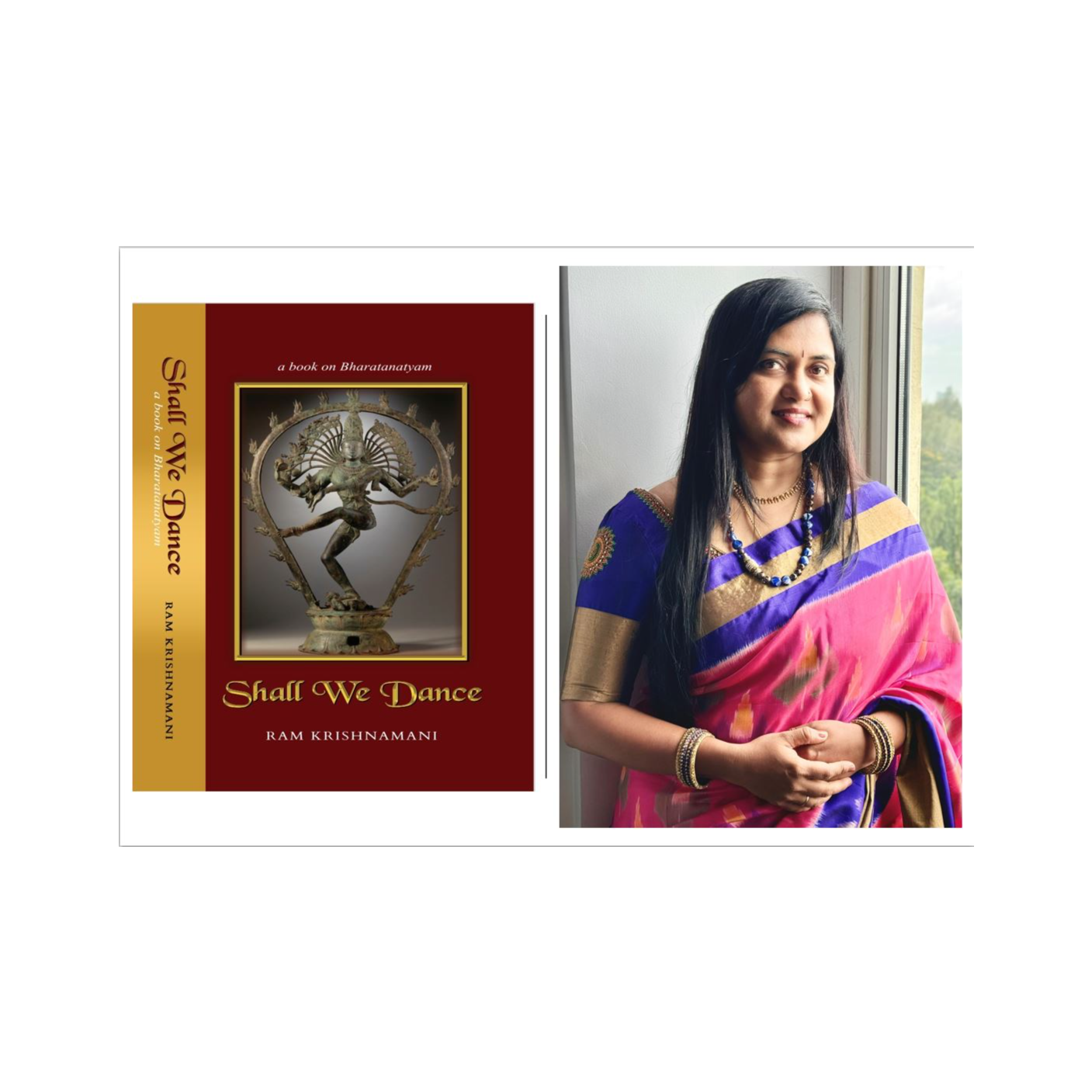 Shall We Dance - Book Teaser10 Minutes With Shantha : Chapter 07 Summary - Theory behind Performing ArtsNarrated by Shantha Lakshmi2024-08-2006 min
Shall We Dance - Book Teaser10 Minutes With Shantha : Chapter 07 Summary - Theory behind Performing ArtsNarrated by Shantha Lakshmi2024-08-2006 min Shall We Dance - Book Teaser10 Minutes With Shantha : Chapter 06 Summary - Cosmic Dance at CERN – Higgs BosonNarrated by Shantha LakshmiThe Cosmic Dance at CERN beautifully symbolizes the intersection of ancient mythology and modern science, particularly in the discovery of the Higgs boson, often referred to as the "God Particle." On July 4, 2012, CERN's groundbreaking announcement confirmed the Standard Model of particle physics, explaining how particles acquire mass. At the entrance of CERN stands a statue of Nataraja, the dancing form of Lord Shiva, gifted by India. This statue embodies the cosmic dance of creation and destruction, reflecting the dynamic activity of subatomic particles. Fritjof Capra, in "The Tao of Physics," first...2024-08-2004 min
Shall We Dance - Book Teaser10 Minutes With Shantha : Chapter 06 Summary - Cosmic Dance at CERN – Higgs BosonNarrated by Shantha LakshmiThe Cosmic Dance at CERN beautifully symbolizes the intersection of ancient mythology and modern science, particularly in the discovery of the Higgs boson, often referred to as the "God Particle." On July 4, 2012, CERN's groundbreaking announcement confirmed the Standard Model of particle physics, explaining how particles acquire mass. At the entrance of CERN stands a statue of Nataraja, the dancing form of Lord Shiva, gifted by India. This statue embodies the cosmic dance of creation and destruction, reflecting the dynamic activity of subatomic particles. Fritjof Capra, in "The Tao of Physics," first...2024-08-2004 min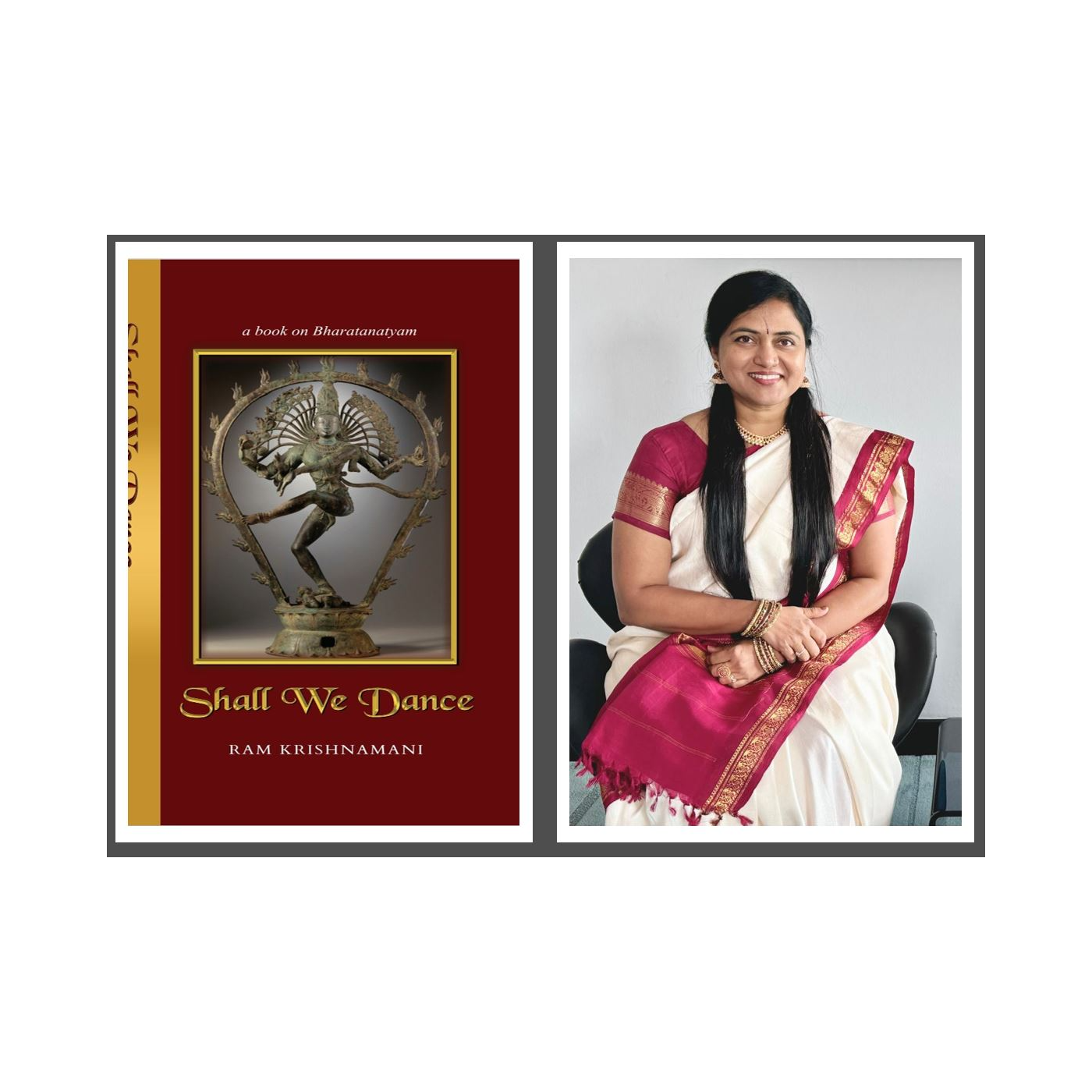 Shall We Dance - Book Teaser10 Minutes With Shantha : Chapter 04 Summary - Shiva to Nataraja Cosmic DancerNarrated by Shantha LakshmiChapter 4 of Shall We Dance explores the profound journey of Shiva as Nataraja, the Cosmic Dancer, embodying the cycles of creation and destruction through his dance. The chapter delves into India's rich oral tradition, emphasizing how cultural knowledge has been preserved through storytelling, songs, and chants. It explains the concept of Shiva in three states—Arupa (Formless), Rupa-Arupa (Formless Form), and Sarupa (With Form)—and how his dance as Nataraja aligns with cosmic phenomena, particularly the Orion constellation. The chapter also highlights the celebration of Mahashivratri and the intersection of c...2024-08-2004 min
Shall We Dance - Book Teaser10 Minutes With Shantha : Chapter 04 Summary - Shiva to Nataraja Cosmic DancerNarrated by Shantha LakshmiChapter 4 of Shall We Dance explores the profound journey of Shiva as Nataraja, the Cosmic Dancer, embodying the cycles of creation and destruction through his dance. The chapter delves into India's rich oral tradition, emphasizing how cultural knowledge has been preserved through storytelling, songs, and chants. It explains the concept of Shiva in three states—Arupa (Formless), Rupa-Arupa (Formless Form), and Sarupa (With Form)—and how his dance as Nataraja aligns with cosmic phenomena, particularly the Orion constellation. The chapter also highlights the celebration of Mahashivratri and the intersection of c...2024-08-2004 min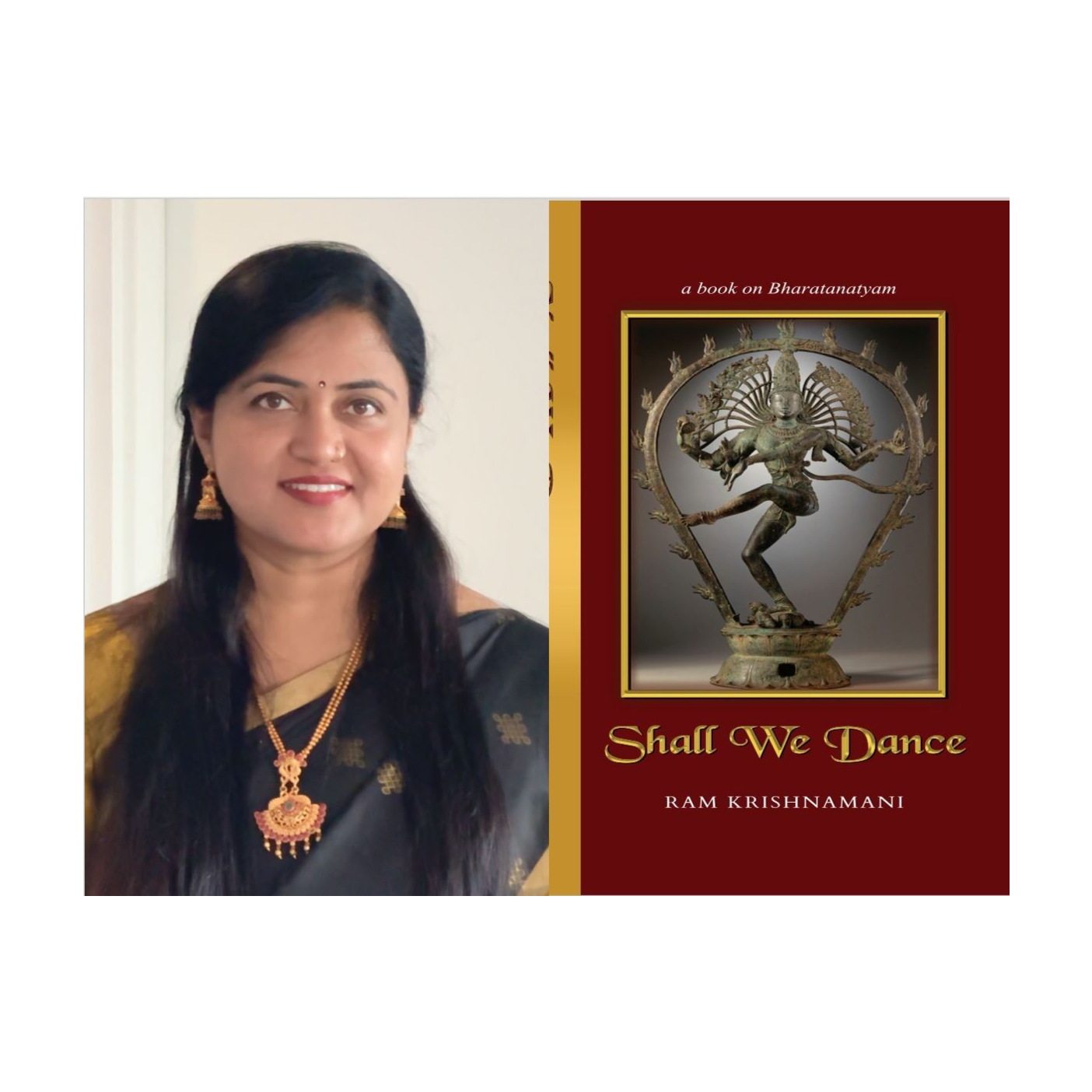 Shall We Dance - Book Teaser10 Minutes With Shantha : Chapter 05 Summary - Shall We Dance - Nataraja and AstronomyNarrated by Shantha LakshmiChapter 5 of Shall We Dance reveals the profound connection between Nataraja, Apasmara, and astronomy, showcasing the deep understanding ancient Indian scholars had of the cosmos. The chapter explores how Nataraja's cosmic dance is intricately linked to astronomical events, reflecting advanced knowledge in Vedic sciences.Key concepts include the Panchang and Nakshatras, which form the foundation of Vedic astrology, and Earth’s precession, which affects the positioning of celestial poles over millennia. The chapter also delves into ancient texts like the Surya Siddhanta and Parashara Tantra, which reference stars like Agastya and th...2024-08-2005 min
Shall We Dance - Book Teaser10 Minutes With Shantha : Chapter 05 Summary - Shall We Dance - Nataraja and AstronomyNarrated by Shantha LakshmiChapter 5 of Shall We Dance reveals the profound connection between Nataraja, Apasmara, and astronomy, showcasing the deep understanding ancient Indian scholars had of the cosmos. The chapter explores how Nataraja's cosmic dance is intricately linked to astronomical events, reflecting advanced knowledge in Vedic sciences.Key concepts include the Panchang and Nakshatras, which form the foundation of Vedic astrology, and Earth’s precession, which affects the positioning of celestial poles over millennia. The chapter also delves into ancient texts like the Surya Siddhanta and Parashara Tantra, which reference stars like Agastya and th...2024-08-2005 min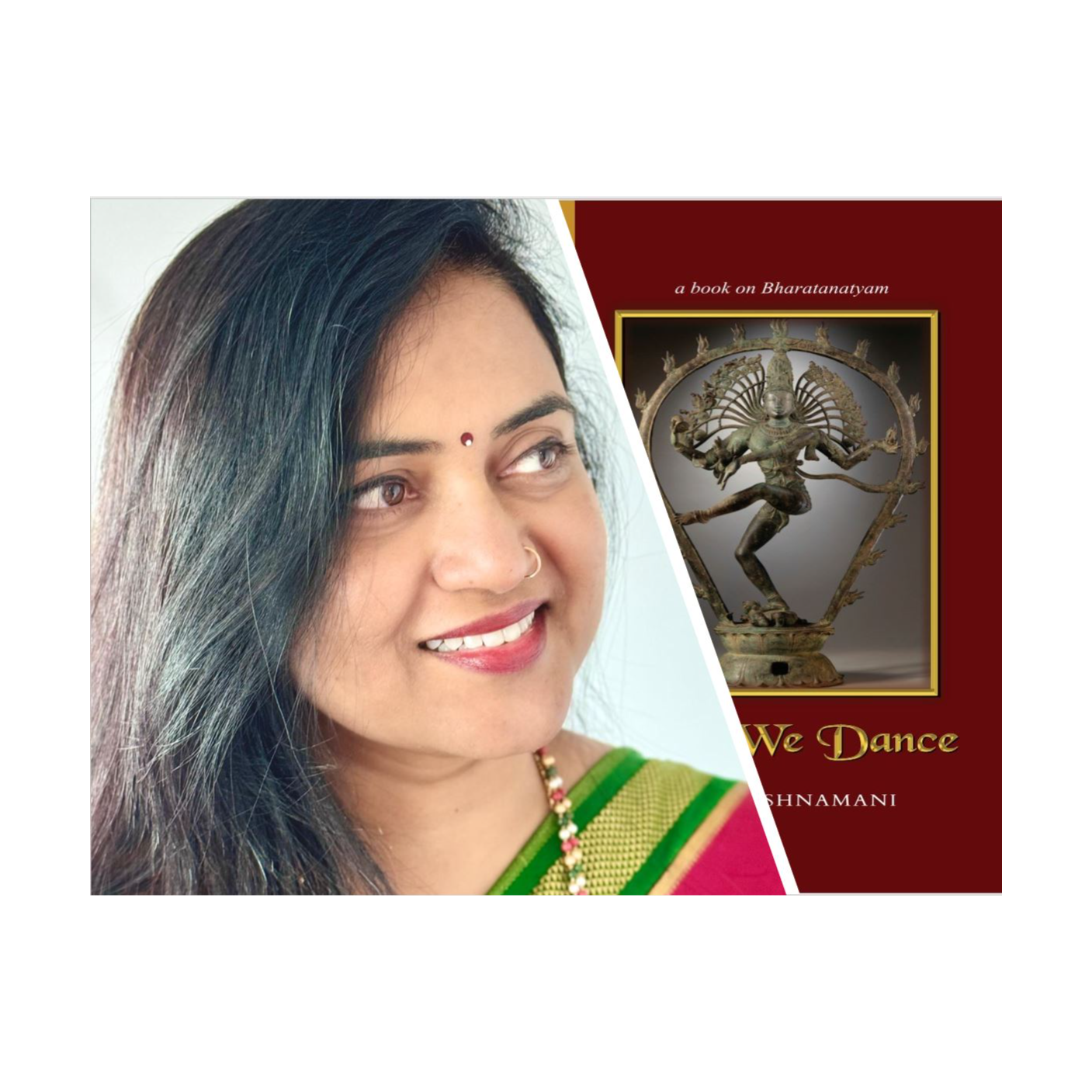 Shall We Dance - Book Teaser10 Minutes With Shantha : Chapter 03 Summary - Bharatanatyam and other classical art formsNarrated by Shantha Lakshmi.Chapter 3 of Shall We Dance delves into the essence of Bharatanatyam, a classical Indian dance form deeply rooted in spiritual and cultural traditions. Originating from Natya Vedam, compiled by Bharat Muni in the Natya Shastra, Bharatanatyam embodies the essence of the four Vedas, transcending social barriers. Central to this dance form is the interplay between Bhava (expression) and Rasa (emotional response), where intricate gestures, movements, and facial expressions evoke powerful emotions in the audience.Bharatanatyam is supported by music (Sangeetham) and literature (Sahityam), creating a dynamic audio-visual experience. The Natya Shastra...2024-08-1905 min
Shall We Dance - Book Teaser10 Minutes With Shantha : Chapter 03 Summary - Bharatanatyam and other classical art formsNarrated by Shantha Lakshmi.Chapter 3 of Shall We Dance delves into the essence of Bharatanatyam, a classical Indian dance form deeply rooted in spiritual and cultural traditions. Originating from Natya Vedam, compiled by Bharat Muni in the Natya Shastra, Bharatanatyam embodies the essence of the four Vedas, transcending social barriers. Central to this dance form is the interplay between Bhava (expression) and Rasa (emotional response), where intricate gestures, movements, and facial expressions evoke powerful emotions in the audience.Bharatanatyam is supported by music (Sangeetham) and literature (Sahityam), creating a dynamic audio-visual experience. The Natya Shastra...2024-08-1905 min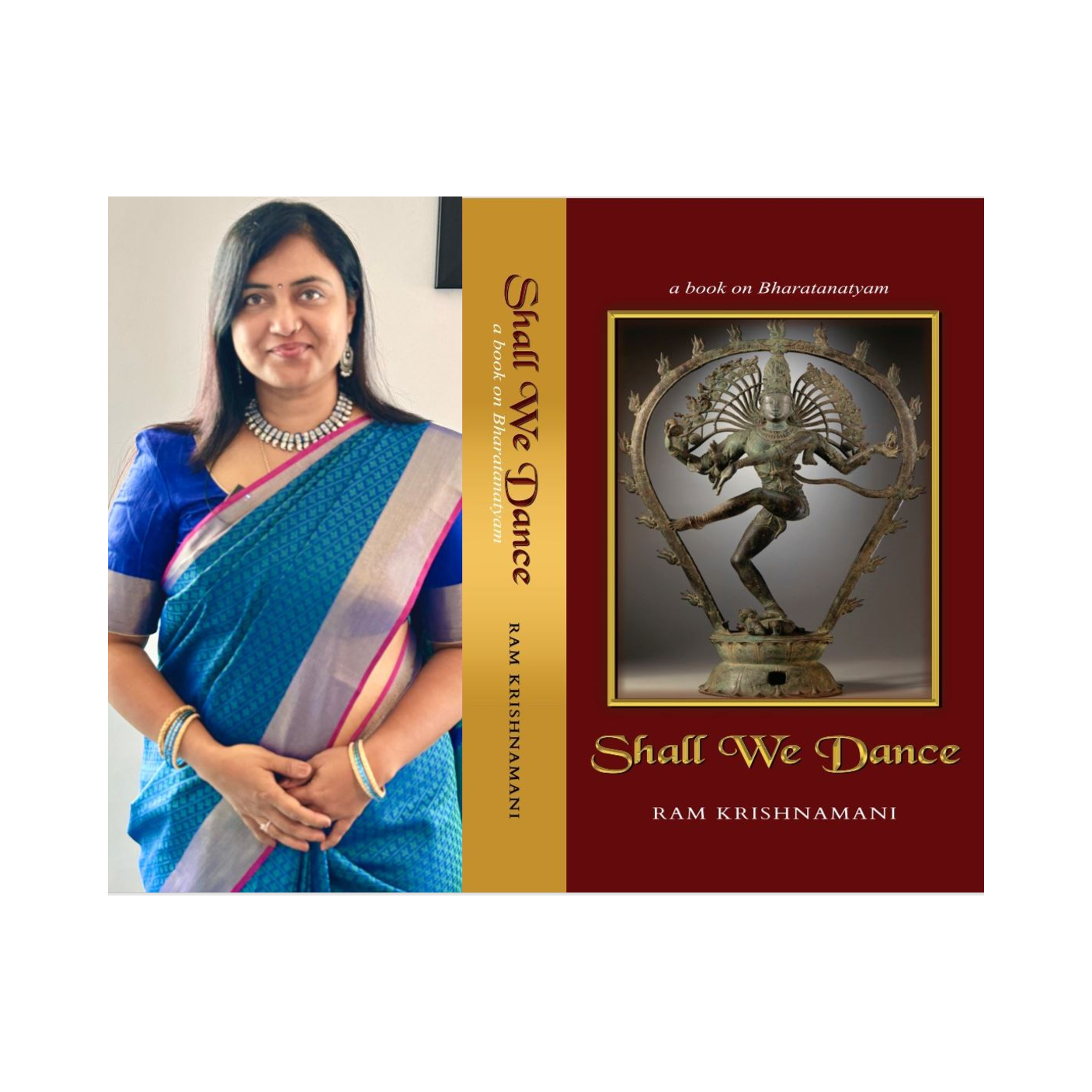 Shall We Dance - Book Teaser10 Minutes With Shantha : Chapter 02 Summary - Bharatanatyam, a classical art formNarrated by Shantha LakshmiChapter 2 of Shall We Dance explores the rich history of Bharatanatyam, one of India's most treasured classical dance forms. Derived from the Sanskrit words "Bha," "Ra," and "Ta," representing Bhavam (emotion), Ragam (melody), and Talam (rhythm), Bharatanatyam masterfully combines these elements to convey profound stories and emotions through its intricate movements and expressions. This dance form originated over 2000 years ago in the temples of Tamil Nadu, as documented in the ancient treatise, the Natya Shastra, written by Sage Bharata. Traditionally, Bharatanatyam was performed by Devadasis, women dedicated to temple service, particularly in places...2024-08-1903 min
Shall We Dance - Book Teaser10 Minutes With Shantha : Chapter 02 Summary - Bharatanatyam, a classical art formNarrated by Shantha LakshmiChapter 2 of Shall We Dance explores the rich history of Bharatanatyam, one of India's most treasured classical dance forms. Derived from the Sanskrit words "Bha," "Ra," and "Ta," representing Bhavam (emotion), Ragam (melody), and Talam (rhythm), Bharatanatyam masterfully combines these elements to convey profound stories and emotions through its intricate movements and expressions. This dance form originated over 2000 years ago in the temples of Tamil Nadu, as documented in the ancient treatise, the Natya Shastra, written by Sage Bharata. Traditionally, Bharatanatyam was performed by Devadasis, women dedicated to temple service, particularly in places...2024-08-1903 min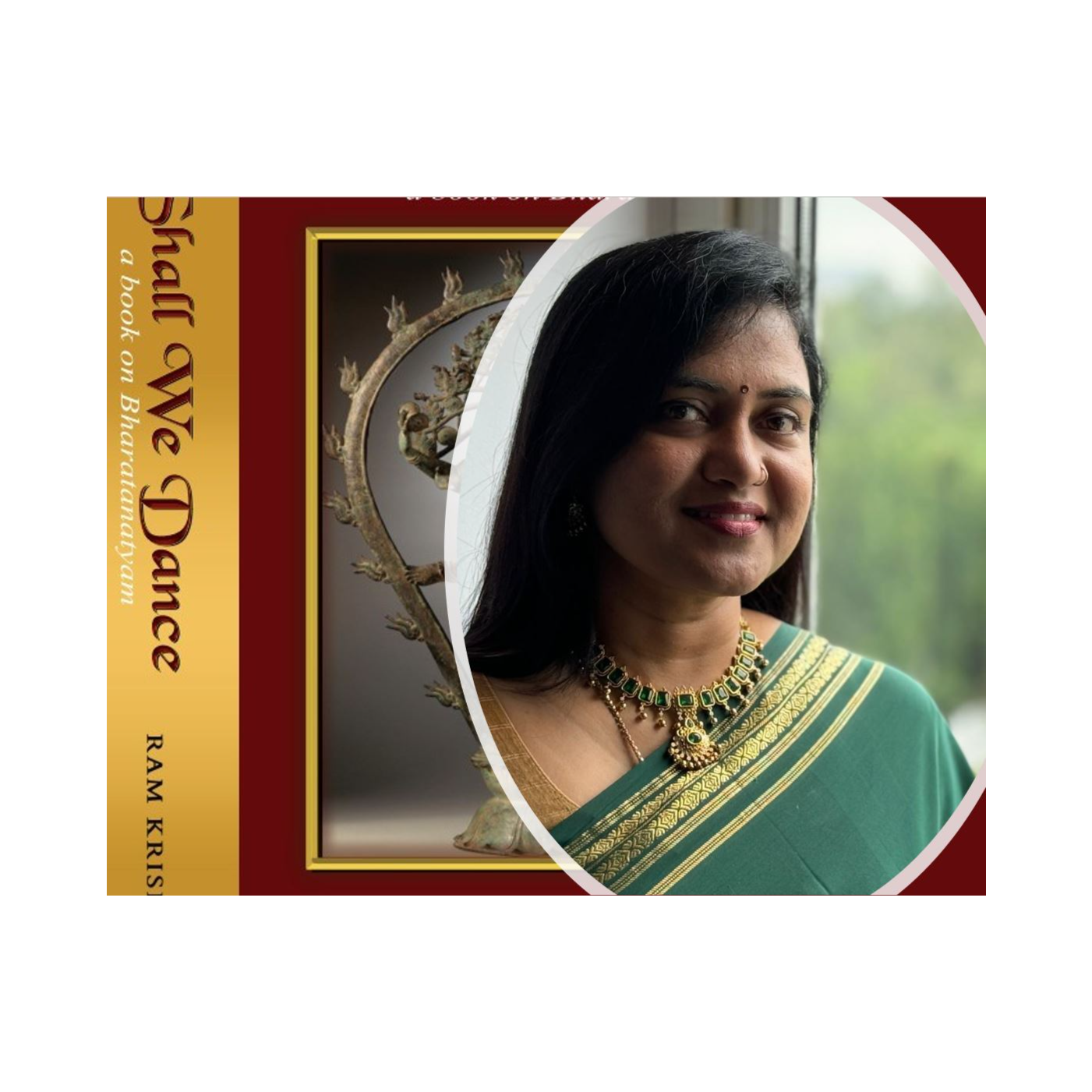 Shall We Dance - Book Teaser10 Minutes With Shantha : Chapter 01 Summary - Bharatanatyam, an introductionNarrated by Shantha LakshmiWelcome to the land of music and dance, India, also known as Bharat. In the first chapter of Shall We Dance, titled "Setting the Stage," we delve into the world of Bharatanatyam, a classical dance form deeply rooted in India's rich cultural heritage. Bharatanatyam, with origins in Tamil Nadu and a history spanning over 2000 years, flourished in temple settings before facing challenges during British colonial rule. Thanks to dedicated revivalists, it has reclaimed its prominence and is now celebrated globally. This chapter introduces the historical and cultural context, setting the tone for our...2024-08-1903 min
Shall We Dance - Book Teaser10 Minutes With Shantha : Chapter 01 Summary - Bharatanatyam, an introductionNarrated by Shantha LakshmiWelcome to the land of music and dance, India, also known as Bharat. In the first chapter of Shall We Dance, titled "Setting the Stage," we delve into the world of Bharatanatyam, a classical dance form deeply rooted in India's rich cultural heritage. Bharatanatyam, with origins in Tamil Nadu and a history spanning over 2000 years, flourished in temple settings before facing challenges during British colonial rule. Thanks to dedicated revivalists, it has reclaimed its prominence and is now celebrated globally. This chapter introduces the historical and cultural context, setting the tone for our...2024-08-1903 min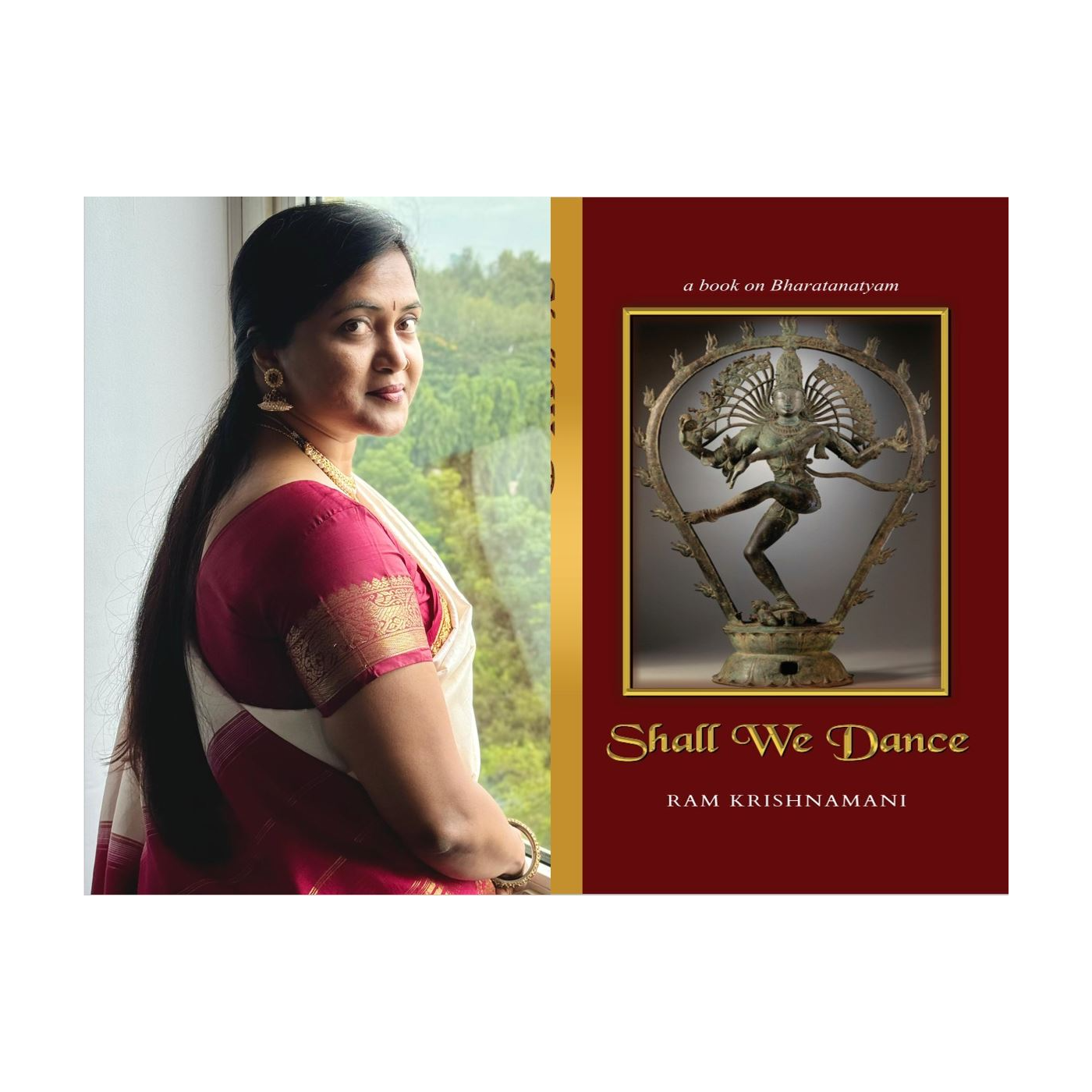 Shall We Dance - Book Teaser10 Minutes With Shantha : Chapter 00. Summary - Shall We Dance - Book TeaserNarrated by Shantha LakshmiRam Krishnamani’s book Shall We Dance is a profound exploration of Indian classical dance, offering readers a rich blend of history, science, and culture.The book delves into the origins of Bharatanatyam, tracing its roots to the ancient text of Natyashastra, which codifies the science and art of dance. With detailed descriptions, Ram unveils the evolution of this celebrated art form, highlighting its significance across centuries.The book serves as both an educational resource and a cultural bridge, inviting enthusiasts and scholars alike to appreciate the intricate nuances of...2024-08-1907 min
Shall We Dance - Book Teaser10 Minutes With Shantha : Chapter 00. Summary - Shall We Dance - Book TeaserNarrated by Shantha LakshmiRam Krishnamani’s book Shall We Dance is a profound exploration of Indian classical dance, offering readers a rich blend of history, science, and culture.The book delves into the origins of Bharatanatyam, tracing its roots to the ancient text of Natyashastra, which codifies the science and art of dance. With detailed descriptions, Ram unveils the evolution of this celebrated art form, highlighting its significance across centuries.The book serves as both an educational resource and a cultural bridge, inviting enthusiasts and scholars alike to appreciate the intricate nuances of...2024-08-1907 min